Costa Rica’s Keys to Success as a Sustainable Tourism Pioneer
How the country went from a deforestation crisis to becoming a global leader in sustainability
- Chapman University
OGphoto / Getty Images
- Sustainable Fashion
- Art & Media
In 2019, Costa Rica was named “ Champion of the Earth '' by the United Nations for its direct role in protecting nature and fighting climate change. The country, which is home to just over 5 million residents, was already known as a world leader in sustainability for putting environmental concerns at the forefront of its political and economic policies.
Over 98% of Costa Rica’s energy has come from renewable sources since 2014 (in 2017, the country ran a full 300 days solely on renewable power) and 70% of all public transport is expected to turn electric by 2035. Through a combination of protected areas, ecosystem services programs, and ecotourism, Costa Rica has successfully restored its forest cover from 26% in 1983 to over 52% in 2021 — proving to the rest of the world that reversing deforestation is possible with the right approach.

Where Is Costa Rica?
Costa Rica is located in Central America, between Nicaragua and Panama. It is known both for its stable, democratic government (the country hasn’t had an army since 1948) and for its incredible natural beauty. A whopping 25% of its territory is comprised of protected lands , ranging from tropical rainforests and rugged mountain ranges, to stunning coastlines and volcanic landscapes.
What Sets Costa Rica Apart?
Central America and the rest of the tropics are full of rich biodiversity and thriving tourism industries, so what exactly sets Costa Rica's approach to sustainable tourism apart?
“Our sustainable tourism model has allowed us to seek and attract niche groups of travelers that recognize our differences and the quality of experiences in the country,” Costa Rica’s Tourism Minister Gustavo Segura Sancho tells Treehugger. “The key to success has been to target a demand that can adapt to the conditions the country has to offer.”
Kahj19 / Getty Images
The country contains more than 6% of the world’s biodiversity despite covering only about 0.03% of the surface of the globe. Housing so much biological variety doesn’t just make Costa Rica a dream location for nature lovers, it also makes the country especially vulnerable to climate change.
“Despite being a small developing country, Costa Rica has decades of sustainable tourism efforts underway,” says Segura Sancho. “Our work involves the efforts of individuals and organizations throughout Costa Rica’s public and private sector and demonstrates a unified commitment to protecting not only our environment and economy, but that of the world.”
Sustainable Destination Development
Kryssia Campos / Getty Images
The country’s tourism model was developed with three primary factors in mind: sustainability, innovation, and inclusiveness. Costa Rica's tourist attractions focus on activities that respect the environment and offer travelers opportunities to reduce their carbon footprint and contribute to conservation and cultural heritage.
The Costa Rican Tourism Institute (ICT) developed a country-wide Certification for Sustainable Tourism back in 1997, which provides tourism companies with guidelines to manage their business sustainably. The certification program educates local companies on the appropriate use of natural and cultural resources, and provides visitors with an official "CST mark" to identify sustainable tourism operators, accommodations, and attractions. As of 2021, over 400 companies in Costa Rica are sustainably certified, and the program has even been recognized by the Global Sustainable Tourism Council and the United Nations World Tourism Organization .
Focusing on long-term sustainability within the tourism industry involved a few risks, for example by making the country a bit more expensive to visit. In the years since the tourism model’s development, surveys have shown that 63% of United States travelers are more likely to consider destinations making an effort to conserve and protect natural resources, while 75% are more likely to consider sustainable destinations. And a study published in the Proceedings of the National Academy of Sciences found that, by the year 2000, protected natural areas in Costa Rica reduced poverty in neighboring communities by 16% by encouraging ecotourism. It would appear that the country’s decades-long investment in sustainable tourism was a good one.
Sustainable Destinations in Costa Rica: Arenal and Monteverde
Kevin Schafer / Getty Images
Established in 1991, Arenal Volcano National Park protects 29,850 acres and at least 131 species of mammals, including monkeys, sloths , coatis , and jaguars , along with the 5,757-foot Arenal Volcano.
An example of sustainable management in the community, locally owned Arenal Observatory Lodge maintains 270 acres of natural forest and 400 acres of reforestation areas. The hotel donates food waste to local farms as feed for animals, uses biodegradable cleaning products, and contributes to several nonprofit community projects.
Just a few hours away, you’ll find an estimated 50% of Costa Rica’s biodiversity in the Monteverde Cloud Forest Biological Preserve . The preserve is run by the Tropical Science Center, a historic non-government environmental organization that has pioneered conservation efforts, research, ecotourism, and sustainable development initiatives throughout the country.
Manuel Antonio National Park
Mark Downey / Getty Images
A relatively small stretch of Costa Rica’s central Pacific coast home to iguanas, toucans, and monkeys , Manuel Antonio was one of the country’s most visited national parks. In an effort to curb pollution and other consequences of overtourism, the park now limits the daily number of visitors to 600 on weekdays, 800 on weekends and holidays, and completely closes the park once a week. The park was awarded the ICT Elite Certificate of Sustainable Tourism in 2021.
Tortuguero National Park
Located on Costa Rica's north Caribbean coast, Tortuguero boasts the largest green turtle nesting site in the Western Hemisphere. Working alongside the Sea Turtle Conservancy , one of the world's oldest international nonprofits focusing on sea turtles, community stakeholders helped fund the Tortuguero Visitor Center in 1959 to help share information with visitors and locals about threats to sea turtles and their ecosystems. The park protects 46,900 acres and focuses on sea turtle research, also offering a Junior Research Assistant Program for local high school students and educational workshops for younger students.
When's the Best Time to Visit Costa Rica?
Most tourists visit Costa Rica during its high season from November to April to enjoy the sunny, dry weather. However, this time of year can also result in higher costs and overcrowding (which can be harder on the environment). Booking a trip during the shoulder season or low season from May to November also has its advantages, from cheaper accommodations and flights to greener surroundings. Plus, off season is typically when locals who rely on the tourism industry struggle the most, so supporting the economy during this time is a major perk. Keep in mind that Costa Rica has a variety of microclimates, so it's best to consider your specific travel destinations and priorities when researching weather.
The Four Pillars of Sustainable Tourism
By definition, sustainable tourism should not only consider its current economic, social, and environmental impacts, but its future effects as well. This is often achieved by protecting natural environments and wildlife while managing tourism activities, providing culturally authentic experiences for visitors, and creating economic benefits for the local community. According to the Global Sustainable Tourism Council , the four pillars of sustainable tourism include sustainable management, socioeconomic impacts, cultural impacts, and environmental impacts. Costa Rica is a shining example of a destination that prioritizes all four of these aspects successfully.
Sustainable Management
Part of the reason why the ICT’s Certification for Sustainable Tourism standards program has become so successful is because of the multiple certification levels it offers. The tiers inspire tourism attractions and tour operators to work harder in strengthening their sustainability practices in order to work their way up. It has become a model for other countries setting sights on sustainability within their own tourism industries.
In order to diversify the tourism industry, the Costa Rica tourism authority also launched an Integral Management of Tourism Destinations program in 2018, with the goal of helping in the development of 32 tourism centers around the country.
Socioeconomic Impacts
Using a Social Progress Index (SPI), the ICT measures the wellbeing of tourism communities across the country. The SPI considers factors like quality of life, basic human needs, level of opportunities, and social welfare rather than gross domestic product (GDP) or other economic variables, something Segura Sancho says will ensure that tourism remains a positive force for development. “Through the SPI tool, the ICT has discovered the positive effects that our sustainable tourism model has had on local communities, including access to higher education, job opportunities, air quality and waste management, quality of life, improvements in safety and community support networks, women's empowerment, among many others.”
The program also leaves room for plenty of innovation, like the establishment of one of the country’s newest national parks on San Lucas Island . Once containing a wildlife refuge and a former prison building housing some of Costa Rica’s worst criminals, the 1.8-square-mile island is now a cultural heritage and hiking site. Tourists can visit the island to enjoy the vibrant wildlife and take tours hosted by local guides, a feature that has greatly contributed to the area’s socioeconomic development. The ICT also supports the Code of Conduct for the Protection of Children from Sexual Exploitation in Travel and Tourism — an initiative of the World Tourism Organization.
Environmental Impacts
Along with the Certification for Sustainable Tourism, the ICT has also implemented several other programs to encourage and enforce environmental sustainability across the tourism sector. The Ecologic Blue Flag Program , for example, evaluates Costa Rica’s beaches on criteria like ocean water quality, waste disposal, sanitary facilities, environmental education, and community involvement in beach maintenance. Only beaches that succeed in maintaining 90% of the strict criteria receive a distinction and an official Blue Flag to display on the beach. The ICT also advocates for coastal planning and supports programs for small businesses and destination management.
Cultural Impacts
Community tourism, which gives visitors a chance to support indigenous communities, meet local people, and experience authentic cultural heritage, is a growing movement in Costa Rica. Especially in the capital city of San Jose, there are numerous opportunities for tourists to learn about Costa Rica’s architecture, artwork, history, and food. San Jose tourists can purchase a discounted single ticket to visit three of the country’s most popular museums , all within walking distance from each other: the National Museum of Costa Rica, the Museum of the Central Bank of Costa Rica, and the Jade and Pre-Columbian Gold Museum. The ICT also provides resources and maps for self-guided walking tours of the country’s main cities and information on where to find traditional Costa Rican cuisine .
A Commitment to the Environment
In early 2021, the Costa Rica National Forest Financing Fund (Fonafifo) and the ICT launched a carbon footprint calculator to help visitors determine their trip’s carbon footprint and contribute to corresponding carbon offsets. Donations to this program are used to strengthen forest conservation efforts in Costa Rica.
Among other long-term targets, Costa Rica’s National Decarbonization Plan puts the country on track to achieve net zero emissions by 2050 , in line with the Paris Climate Agreement and the UN’s Sustainable Development Goals. Although 98% of the country’s electricity already comes from renewable sources, the plan aims to power 100% of the country’s public transport with electricity by 2050. President Carlos Alvarado Quesada’s Administration plans to work with individuals from both the public and private sectors, scientists, and other industry experts to make this vision a reality.
Establishing parks and refuges in Costa Rica — which now numbers 30 national parks, 51 wildlife refuges, and nine biological reserves — has generated responsible tourism and funded conservation efforts in parts of the country that otherwise may have gone overlooked by visitors. Although a full 25% of Costa Rica is officially zoned as protected territory, local appreciation for nature encompasses the entire country.
“Sustainability has long been embedded in the culture and traditions of Costa Rica,” Segura Sancho explains. “From an early age, children are taught to protect the country’s forests and wildlife, and to appreciate the diverse landscapes and natural beauty that the country has to offer. This inherent love of our surroundings means we want to conserve its many species of animals, insects, trees and birds for decades to come.”
" Renewable Energy - Costa Rica ." International Trade Administration.
" Environment ." Embassy Of Costa Rica In Washington DC.
" Why ‘Going Green’ Pays Off: Sustainable Practices Drive Destination Choice For A Majority Of Travelers, New Research Unveils ." Sustainable Travel International , 2016.
Ferraro, P. J., and M. M. Hanauer. " Quantifying Causal Mechanisms To Determine How Protected Areas Affect Poverty Through Changes In Ecosystem Services And Infrastructure ." Proceedings Of The National Academy Of Sciences , vol. 111, no. 11, 2014, pp. 4332-4337., doi:10.1073/pnas.1307712111
- What Is Sustainable Tourism and Why Is It Important?
- Regenerative Travel: What It Is and How It's Outperforming Sustainable Tourism
- Best of Green Awards 2021: Sustainable Travel
- What Is Ecotourism? Definition, Examples, and Pros and Cons
- What Is Overtourism and Why Is It Such a Big Problem?
- Why Are National Parks Important? Environmental, Social, and Economic Benefits
- How to Be a Sustainable Traveler: 18 Tips
- 15 of the Most Beautiful Botanical Gardens in the US
- Top 8 Agritourism Destinations in the World
- 15 of the Best City Parks in America
- 10 Small Towns With Big Personalities
- 10 Uniquely Shaped Islands
- Do Green Amusement or Theme Parks Exist?
- Park vs. Refuge: What's the Difference?
- National Monuments Designated By President Obama
- 10 of the World's Most Spectacular Artificial Reefs
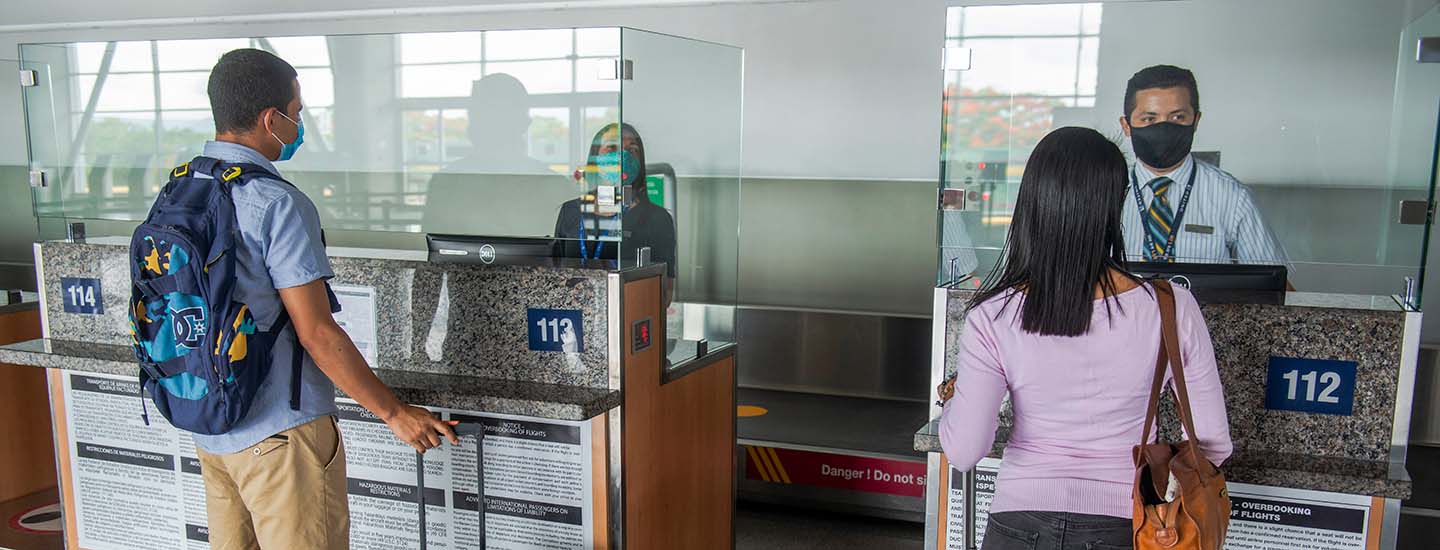
Costa Rica Tourism Board INSTITUTIONAL SITE
The Costa Rican Tourism Board (ICT) invites you to explore this dynamic platform, in which you can learn in detail about the area of activity of Costa Rica's leading tourism institution, with up-to-date information for all of your inquiries.
While you browse the sections of this site, which has been designed for you, you will discover the reach of the Board: tourist figures, the departments and divisions that make its work possible, sustainability certifications and the services the Board provides. Information such as the requirements for the tourism declaration and the participation in international trade fairs are just some of the material of interest that you will find among this website's content.
It is a privilege for us to serve you and to work together to strengthen the tourism industry, which drives development, foreign exchange and employment in Costa Rica, and is an engine of growth in its economy. As ICT employees, we are all proud to set ourselves to this difficult task every day, in partnership with the private sector.
Every tourism indicator for Costa Rica in one place.
Sustainability
Our mission to protect the environment has made us stand out.
Quick access list to every kind of ICT procedure and consultation.
- Regional Offices
Our locations and what you can do in regional offices
Institutional Services

Institutional Information

Tourism in Costa Rica

75% travel for vacation purposes.
75% of the people visiting Costa Rica travel for vacation, pleasure, and leisure; while only 13% do so for professional and business purposes.

More than 2 million visits per year.
Costa Rica has a constant visit growth year after year; and, it remains as the main destination of the Region.

68% enjoy the sun and beaches of Costa Rica.
Costa Rica offers idyllic beaches in both the Caribbean Sea and the Pacific Ocean, becoming a favorite destination for this activity
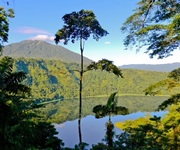
The initiative aims to encourage Costa Ricans and visitors to discover the riches of the region: rivers, waterfalls and lakes along with flora and fauna and the hospitality of its inhabitant...
Read more »
Faith Glamping Dome Costa Rica offers futuristic geodesic domes placed in the middle of the forest, just a few meters from the beach in Playa Grande, Manzanillo. Eco-glamping stays are avai...
Did you know... That the crafts of Guaitil are made with iguana sand? That the church of San Blas is one of the country’s oldest? That Barra Honda has caverns that are 60 million years o...
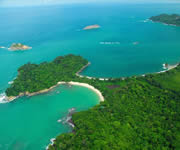
The objective is to extend the weekend schedule in order to promote the reactivation of the local economy, which has been affected by the pandemic. The park will close on Tuesdays for maintenan...
Notes Section

- The award criteria included reusing materials and following public health protocols to combat COVID-19.
- The fair began on May 19 and finished on Sunday.

- Passengers will receive results in approximately one hour, allowing them to fulfil entrance requirements in certain countries that require the test.
- Laboratorios Echandi will be in charge of operating the service.
Beginning on May 14, the Juan Santamaría International Airport, under the administration of AERIS Costa Rica, will offer a rapid testing laboratory to detect the SARS-CoV-2 virus, which causes COVID-19.
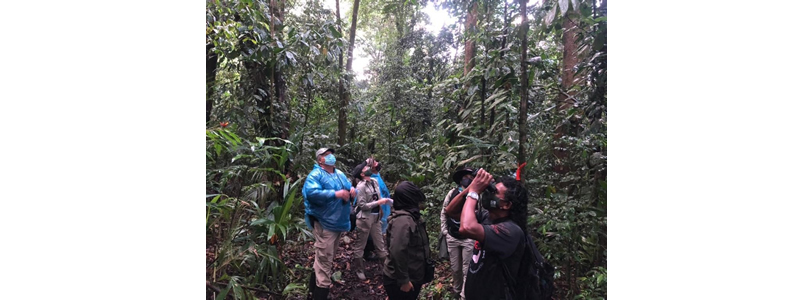
Measure announced by public health authorities to stop the spread of COVID-19.
- Public health measures at visitor centers will remain in force.
- Measures will apply from May 13-31, inclusive.
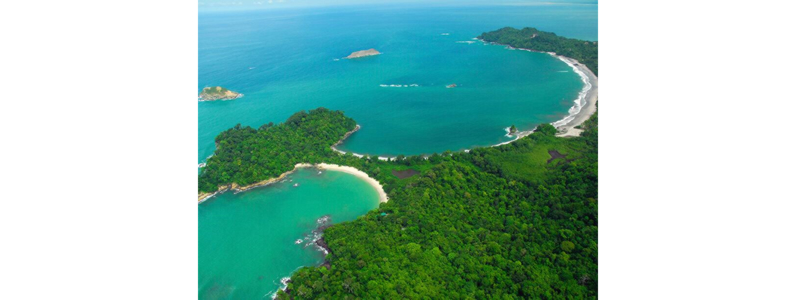
SINAC and ICT ask visitors to follow a series of recommendations for a safe visit.
- Engaging in responsible and safe tourism in PWAs requires consistent action on the part of everyone involved.
- SINAC and ICT have launched campaigns to promote respect for wildlife and visitor safety.
- Use official websites to learn about the PWA that you will be visiting.

- Convention Center received three major awards: gold in the “People’s Choice” category and bronze in the “Convention Center” and “Versatile Venue” categories.

- Board of Directors
- Employee Directory
- Message From The Managment
- Organization Chart
- Administrative and Financial Directorate
- Administrative
- Certification Process and Social Responsibility in the Tourism Industry
- Directorate of Tourism Consulting and Management
- Directorate of Tourism Development and Planning
- Executive Presidency
- Financial Department
- General Management
- Golfo de Papagayo Tourism Development
- Information Administration Unit
- Information Technology Department
- Investment Attraction
- Legal Counsel
- Management and Advisory Department
- Maritime Terrestrial Zone
- Marketing Directorate
- Office of the Comptroller
- Planning Unit
- Procurement Unit
- Research and Market intelligence
- Retirement Fund
- Revenue Department
- Tourism Development
- Talent Management Department
- Tourism Planning Department
- Tourism Services Department
- National Education Commission
- Airplane Tickets
- Airplane Ticket Exoneration
- Audiovisual Material Request
- Cooperative Campaigns
- Destination Presentations
- International Fairs
- Informative news
- Country Brand
- Press Trips
- Tourist Guide Requirements
- Tourist Transportation Requirements
- Tourism Contract Requirements
- Tourism Declaration Requirements
- Tourist Information Offices
- Coronavirus Support Material (Tourism Sector)
- Crafts with Identity
- Tourism Infographics
- Cultural Tourist Guide
- Institutional Plans and Documents
- Laws, Regulations, and Procedures
- Economic Figures
- Statistical Reports
- Charts and Graphics
- Code of Conduct
- Ecologic Blue Flag Program
- Procedures and Information to Citizens
- Service Comptrollership
- Access to E-mail for Staff
- Costa Rican Investment Promotion Agency (CINDE)
- Chambers and Associations of Tourism
- Important Links
- RICO’s DIGEST
- CONFIDENTIAL
- TSG VICE (NSFW)

- Central America
- South America
- Rico’s Q
- Christopher Howard’s Live in Costa Rica
- Rick Philps
- Juan Sebastian Campos
- Michael Miller
- Expat Focus
- Today Costa Rica
- Living in Costa Rica
- What is The Q? (About Us)
Costa Rica presents its national tourism plan
One of the objectives of the Plan is to achieve, in the year 2027, an income of US$4.9 billion in foreign exchange and the arrival of 3.8 million tourists in the country by all routes.
Criminal group appropriated three bus routes with the help of a CTP official and five traffic officers
Chaves discredits statements from ‘bank of america’ that warn about the elimination of controls with the referendum plan, two years ago, in san josé there were no children on the streets; today there are dozens, costa rica’s financial system registers 14 interventions in 3 decades: almost 1 every 2 years, accumulation of embezzlements and frauds call into question costa rica’s banking controls, panama canal will normalize ship transit starting in august, former honduran president hernández is sentenced to 45 years in prison in u.s., dollar exchange.
27 June 2024 - At The Banks - Source: BCCR
QCOSTARICA – With three major objectives for the growth and improvement of the Costa Rican tourism industry and for tourism to remain the leader of the national economy, the Instituto Costarricense de Turismo (ICT) presented the Costa Rica National Tourism Plan 2022-2027.

“After months of joint work between the public and private sectors, we are pleased to have the guide that will allow us to continue promoting tourism and its chains, adapted to the new reality,” said William Rodríguez López, Minister of Tourism, when presenting the document. strategic in the Convention Center last Friday.
The backbone of the 2022-2027 Plan is the renowned Costa Rican tourism development model that is based on three pillars: sustainability, innovation, and inclusiveness, and that seeks an equitable distribution of benefits to contribute to the improvement of the quality of life to which Costa Rica aspires as a nation.
In addition, the Plan seeks to promote the country’s position as a valuable society, promote a shared vision of the future, and promote environmental, social and economic tasks.
Rodolfo Lizano, director of Tourism Planning and Development at the ICT, explained that the vision set forth in the plan aims for tourism to continue to be one of the leading sectors of the national economy, and also to value, take advantage of and promote natural resources in a responsible manner. , cultural and human that are an essential part of the tourist experience that the country offers to both national and international tourists.
“Together with this, that tourism be an inclusive, resilient activity that generates linkages, innovative, safe and high-quality services for local and foreign tourists, allowing them to connect with the Costa Rican essence, its riches, values and with the valuable society that we have built together,” added Lizano.
Objectives to be achieved
The Costa Rica National Tourism Plan 2022-2027 defined as its first objective, to promote a resilient tourism activity that makes sustainable use of tourism and cultural heritage.
The aim is to have, by 2027, tourism destination management plans that integrate local tourism development, sustainable production and measures to combat climate change and its effects in all 32 Tourism Development Centers in the country.
The second objective is to promote the distribution of demand in the 32 Tourism Development Centers of Costa Rica to continue improving the quality of life of the communities in the different regions. The goal in a period of five years is to reach and exceed the level of 70 points in the Social Progress Index in these centers.
The third objective is to maintain tourism as the main engine of the Costa Rican economy and thereby achieve by 2027 an income of US$4.9 billion in foreign currency, the arrival of 3.8 million tourists in the country for all roads, and 400,000 cruise passengers disembarking in all the country’s ports.
The six strategies for achieving goals are:
- Adopt innovative, sustainable and inclusive practices to promote the efficient use of tourism resources for the benefit of tourists, companies and the population in general, always in harmony with nature.
- Improve the offer of products focused on diversification, innovation, inclusion, sustainability and quality, to generate greater added value for tourists.
- Increase the interest of the main source markets of international tourists and of the national tourist market as a differentiated destination, promoting a comprehensive strategy to position Costa Rica as a valuable society and suitable to be visited throughout the year.
- Strengthen inclusive production chains by promoting productivity and competitiveness of companies, for the generation and distribution of benefits among local actors and communities.
- Generate a good perception of the tourist experience by visitors.
- Ensure that tourism leads an effective inter-institutional coordination, promoting impact initiatives for the sector.
Share this:
- foriegn tourists
- promoting tourism
- Tourism Planning

Related Articles
Panama committed to marine conservation and regenerative tourism to attract tourists, southwest airlines inaugurates direct route between costa rica and orlando, florida, subscribe to our stories.
To be updated with all the latest news, offers and special announcements.
Argentina: Less inflation, more poverty under Milei

- San Jose (SJO) Airport Flight Info
- Liberia (LIR) Airport Flight Info
- Puntarenas – Playa Naranjo Ferry
- Puntarenas – Paquera Ferry
- List of Countries in North America
- Lighter Side
- San Jose Airport
- Liberia Airport
- Trains & Buses
- Costa Rica Immigration
- Costa Rica Road Conditions
- Tourism Institute
- Costa Rica Weather
- Earthquake Centre
- Costa Rica Banks
- Costa Rica Best Doctors
Discover more from Q COSTA RICA
Subscribe now to keep reading and get access to the full archive.
Type your email…
Continue reading
How Costa Rica is Investing in a Landscape Approach to Build a Sustainable Future
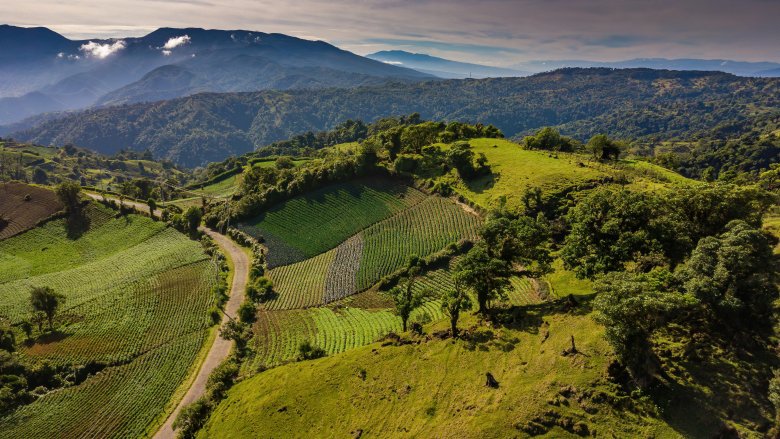
Raul Cole/Shutterstock
When you think of Costa Rica, images of lush forests, waterfalls, and diverse wildlife may come to mind. These hallmarks of natural beauty are spot on for the country, given that over half of Costa Rica’s national land area is forested and over a quarter is under some form of state-monitored environmental protection. Costa Rica’s investments in nature and environmental protection have paid off in several ways as the country is recognized internationally as an ecotourism destination and a conservation leader.
However, Costa Rica’s commitment to rehabilitating and conserving forest ecosystems goes well beyond conservation alone, and is fundamental to its development strategy across many sectors. In particular, protection of its rich natural resource endowment underpins the development of the country’s agricultural sector, which both depends on and, at times, adversely impacts, forests, land, water, biodiversity and other natural resources. Maintaining healthy forest ecosystems while promoting sustainable agricultural growth is also core to Costa Rica’s efforts to reduce poverty and improve livelihoods in rural areas where poverty rates can more than double the national average of 20 percent and people depend heavily on agriculture for income.
Successfully balancing forest conservation and other land uses to achieve Costa Rica’s conservation, economic growth, and poverty reduction goals requires collaboration and informed action across different groups of land users and stakeholders. To harmonize and jointly leverage the country’s agricultural and environmental agendas, the Government of Costa Rica formulated an “Agro-environmental Agenda” among its Ministry of Agriculture (MAG) and Ministry of Environment and Energy (MINAE). The Agenda has a wide range of objectives, ranging from improving the efficiency of food systems to meeting its global commitments related to climate change through Nationally Appropriate Mitigation Actions (NAMAs) to reduce greenhouse gas emissions along key agriculture value chains.
Within this context, the World Bank through PROGREEN is providing support to help Costa Rica achieve multiple uses and benefits within a given landscape through an integrated landscape management approach. Activities within this program are helping to enhance the government’s capacity to design integrated landscape management policies and programs in rural areas in collaboration with MAG and MINAE. The program is focused on providing support in the following areas:
Advancing NAMAs and climate adaptation: PROGREEN is helping to identify options for establishing the business case to scale up the country’s NAMAs already in implementation for coffee and livestock and to design pilots for the NAMAs related to sugar cane, rice, and sugar cane, rice, and musaceas, a family of plants including banana and plantain. It will also contribute to a roadmap for the country’s first Agriculture Sector Adaptation Plan.
Spatial data and planning: By leveraging spatially-explicit data and territorial planning tools, PROGREEN will help identify how to monitor, in real time, environmental services delivered from integrated landscape management practices and tie this to a planned expansion of the country’s globally renowned payment for environmental services (PES) scheme.
Fiscal policy and financial program review: After assessing existing fiscal instruments and financial programs that influence the use of technologies and production systems in the agricultural sector, PROGREEN will identify options for better aligning fiscal policies and financial programs with the objectives of the low-carbon and climate resilience elements of the Agro-environmental Agenda.
The program is in part a pilot for testing different approaches to enhancing integrated landscape management with lessons learned extended to other countries in Central America. To facilitate such knowledge sharing among government agencies and stakeholders, PROGREEN will facilitate opportunities for sharing experiences with implementing these integrated landscape approaches within and beyond Costa Rica.
The activities outlined above are expected to help Costa Rica transition to more sustainable agriculture production systems that allow the country to meet its’ conservation and development goals in an integrated manner. It will also open the door a little wider for the country’s eco-tourism livelihood opportunities to move beyond forests and protected areas to include agricultural landscapes as well.
This site uses cookies to optimize functionality and give you the best possible experience. If you continue to navigate this website beyond this page, cookies will be placed on your browser. To learn more about cookies, click here .

- Latest News
- Antigua & Barbuda
- The Bahamas
- British Virgin Islands
- Canadian Residents Outbound
- Caribbean Long Term
- Cayman Islands
- Cruise Visitors Caribbean
- Dominican Republic
- El Salvador
- Global (UNWTO)
- The Maldives
- Puerto Rico
- Saint Lucia
- St Kitts & Nevis
- St. Vincent & The Grenadines
- Sint Maarten
- Trinidad and Tobago
- Turks & Caicos
- UK Residents Outbound
- US International Outbound
- US Consumer Confidence Index
Hotel trends for 2023

- Low pricing
- Ability to get a full refund
- Flexible cancellation policies

How will Las Vegas tourism evolve in 2023? We asked an insider who knows.
69% of travellers want to travel sustainably this year, new report shows, unwto tourism barometer january 2023..
IATA reports Passenger Recovery Continued in November.

Travel Predictions 2023 – Booking.com

Jim Hepple is an Assistant Professor at the University of Aruba and is Managing Director of Tourism Analytics.
June 2024 May 2024 April 2024 March 2024 February 2024 January 2024 December 2023 November 2023 October 2023 September 2023 August 2023 July 2023 June 2023 May 2023 April 2023 March 2023 February 2023 January 2023 December 2022 November 2022 October 2022 September 2022 August 2022 July 2022 June 2022 May 2022 April 2022 March 2022 February 2022 January 2022 December 2021 November 2021 October 2021 September 2021 August 2021 July 2021 June 2021 May 2021 April 2021 March 2021 February 2021 January 2021 December 2020 November 2020 October 2020 September 2020 August 2020 July 2020 June 2020 May 2020 April 2020 March 2020 February 2020 January 2020 December 2019 November 2019 October 2019 September 2019 August 2019 July 2019 June 2019 May 2019 April 2019 March 2019 February 2019 January 2019 December 2018 November 2018 October 2018
Explore Costa Rica
The Role of Tourism in Costa Rica’s Economy: A Comprehensive Guide
Welcome to this in-depth exploration by Explore CR, where we delve into the pivotal role of tourism in Costa Rica’s economy. Known for its stunning biodiversity, Costa Rica has become a top destination for eco-tourists worldwide. In this article, we’ll explore how tourism has shaped the nation’s economy and continues to drive its growth. Let’s get started!
1. Tourism: A Major Economic Driver
Tourism in Costa Rica is more than just a sector; it’s a significant economic driver. According to the Costa Rican Tourism Board , tourism contributes to over 8% of the country’s Gross Domestic Product (GDP). This figure underscores the sector’s importance in generating income and employment.

Moreover, tourism has a multiplier effect on other sectors of the economy, such as agriculture, construction, and services, stimulating overall economic growth.
2. Eco-Tourism: Costa Rica’s Unique Selling Proposition
Costa Rica’s commitment to preserving its rich biodiversity has positioned it as a global leader in eco-tourism. The country’s vast array of national parks, reserves, and protected areas attract millions of tourists each year, eager to experience its unique flora and fauna.
Eco-tourism not only promotes environmental conservation but also creates job opportunities and supports local communities, contributing to sustainable economic development.
3. The Impact of Tourism on Employment
Tourism is a significant source of employment in Costa Rica. The sector directly and indirectly employs hundreds of thousands of people, from hotel staff and tour guides to restaurant workers and artisans.
Furthermore, tourism fosters entrepreneurship, with many Costa Ricans starting their own businesses to cater to tourists, such as souvenir shops, restaurants, and tour companies.
4. The Challenges and Opportunities in Costa Rica’s Tourism Sector
Despite its significant contributions, Costa Rica’s tourism sector faces challenges, including seasonality, competition, and the need for sustainable practices. However, these challenges also present opportunities for innovation and diversification.
For instance, Costa Rica is expanding its offerings beyond eco-tourism to include wellness tourism, adventure tourism, and cultural tourism. These initiatives aim to attract a broader range of tourists and ensure the sector’s long-term sustainability.
FAQ Section
Q1: How much does tourism contribute to Costa Rica’s GDP? A: Tourism contributes to over 8% of Costa Rica’s GDP.
Q2: What is eco-tourism? A: Eco-tourism is responsible travel to natural areas that conserves the environment, sustains the well-being of the local people, and involves interpretation and education.
Q3: How does tourism impact employment in Costa Rica? A: Tourism directly and indirectly employs hundreds of thousands of people in Costa Rica and fosters entrepreneurship.
Q4: What challenges does Costa Rica’s tourism sector face? A: Challenges include seasonality, competition, and the need for sustainable practices.
Q5: What are some emerging trends in Costa Rica’s tourism sector? A: Emerging trends include wellness tourism, adventure tourism, and cultural tourism.
In conclusion, tourism plays a crucial role in Costa Rica’s economy, driving growth, creating jobs, and fostering sustainable development. Despite the challenges, the sector’s future looks promising, with opportunities for diversification and innovation. Through this guide by Gigonway, we hope you’ve gained a deeper understanding of the role of tourism in Costa Rica’s economy.
- Attractions
- Conversations With…
- Development
- Transportation
- Marketing Blog

Costa Rica’s new 2022-2027 National Tourism Plan

The Costa Rican Tourism Institute (ICT) recently announced the the National Tourism Plan for 2022-2027.
Presented by William Rodríguez López, Minister of Tourism, in an event at the convention center, the plan features three main objectives for the growth and improvement of the Costa Rican tourism industry:
- Sustainability
- Inclusiveness
Read more about the plan on Tico Times .

RELATED ARTICLES MORE FROM AUTHOR

¿Por qué Costa Rica necesita regular los alquileres vacacionales sin licencia?

Digital Nomad law now in effect in Costa Rica

Government agrees with deputies: Promote tourism and repair roads in Limón
Popular categories.
- Government 28
- Development 17
- Covid-19 15
- Transportation 14
- Marketing 14
- Conversations With... 10
- Industry & Metrics 6
- Attractions 5
- Marketing Blog 5
- Cookie Policy
- Privacy Policy
- Terms of Use

China in Costa Rica: Partner or Predator?
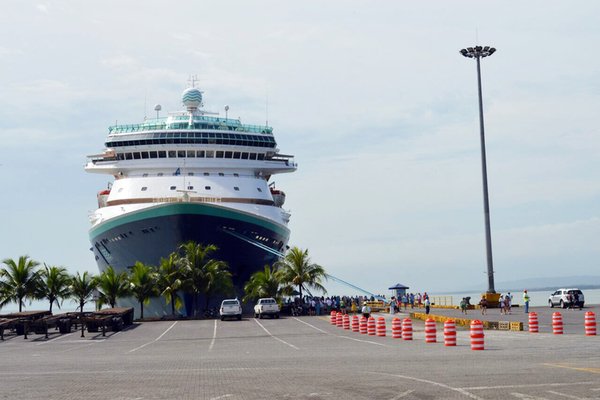
Inside Limón’s plan to develop as a tourist hotspot
Winter is here! Check out the winter wonderlands at these 5 amazing winter destinations in Montana
- Travel Guide
- Sustainability
Ecotourism Costa Rica Case Study: Who Benefits?
Published: November 14, 2023
Modified: December 28, 2023
by Jyoti Vanness
- Central & South America
- Travel Destinations
Introduction
Ecotourism has become a buzzword in the travel industry, with travelers increasingly seeking out destinations that prioritize sustainability and environmental conservation. One country that has made significant strides in developing and promoting ecotourism is Costa Rica.
Renowned for its breathtaking biodiversity and commitment to environmental protection, Costa Rica has positioned itself as a leading destination for eco-conscious travelers. From lush rainforests and diverse wildlife to immaculate beaches and stunning volcanoes, the country offers a plethora of natural wonders for visitors to explore.
In this article, we will delve into the concept of ecotourism and discuss why Costa Rica serves as an excellent case study for examining the benefits and challenges associated with this form of sustainable travel.
At its core, ecotourism involves responsible travel to natural areas that conserve the environment, sustain the well-being of local communities, and provide educational and enjoyable experiences for visitors. It goes beyond traditional tourism by incorporating principles of conservation, community empowerment, and environmental stewardship.
Costa Rica, with its commitment to environmental protection and sustainable development, has emerged as a prime example of how ecotourism can positively impact a country’s economy, society, and natural resources.
Throughout this article, we will explore the economic, social, and environmental benefits of ecotourism in Costa Rica. We will also discuss the challenges and criticisms that this form of tourism faces in the country, shedding light on the complexities of balancing tourism growth with environmental preservation.
Join us on this journey as we uncover the fascinating world of ecotourism in Costa Rica and examine the question: Who truly benefits from this unique approach to travel and conservation?

Definition of Ecotourism
Ecotourism is a form of tourism that focuses on sustainable travel experiences, promoting the conservation of natural resources and the well-being of local communities. It encompasses responsible travel practices that minimize negative impacts on the environment while providing educational and enriching experiences for visitors.
Ecotourism goes beyond traditional tourism by emphasizing the importance of environmental conservation, cultural preservation, and community empowerment. It aims to create a positive and symbiotic relationship between tourists, local communities, and the natural environment.
The International Ecotourism Society (TIES) defines ecotourism as “responsible travel to natural areas that conserves the environment, sustains the well-being of local people, and involves interpretation and education.” This definition highlights the three pillars of ecotourism: environmental sustainability, community development, and visitor education.
The environmental sustainability aspect of ecotourism involves minimizing the ecological impacts of tourism activities. This can be achieved through practices such as reducing water and energy consumption, managing waste effectively, and protecting fragile ecosystems and wildlife habitats. Ecotourism encourages tourists to appreciate and respect the natural beauty and biodiversity of the destinations they visit.
Community development is another essential component of ecotourism. It focuses on empowering local communities by involving them in decision-making processes, providing economic opportunities, and preserving their cultural heritage. Ecotourism initiatives often collaborate with local communities to ensure that they directly benefit from tourism-related activities, such as hospitality, guiding, and the sale of local products.
Visitor education plays a crucial role in promoting ecological awareness and sustainability. Ecotourism seeks to educate tourists about the natural and cultural significance of the destinations they visit, as well as the importance of responsible travel practices. By providing educational experiences, ecotourism encourages tourists to become ambassadors for conservation and advocates for sustainable tourism.
Overall, the concept of ecotourism is centered around the idea of promoting a harmonious and mutually beneficial relationship between tourists, host communities, and the environment. It seeks to create a positive impact on local economies, empower communities, and protect natural habitats for future generations.
Overview of Costa Rica
Costa Rica, a small country located in Central America, is often referred to as a “natural paradise” due to its incredible biodiversity and stunning landscapes. Situated between the Caribbean Sea and the Pacific Ocean, Costa Rica is home to a wide array of ecosystems, including rainforests, cloud forests, mangroves, beaches, and volcanoes.
Despite its size, Costa Rica boasts an astounding 5% of the world’s biodiversity, making it one of the most biodiverse countries on the planet. It is estimated that the country is home to around 500,000 species, including over 12,000 different plant species, 850 bird species, 250 mammal species, and countless reptiles, amphibians, and insects.
The country’s commitment to environmental conservation is evident through its extensive system of national parks, reserves, and protected areas, which cover around 25% of its land. Costa Rica was one of the first countries to recognize the value of its natural resources and has been at the forefront of sustainable development for several decades.
Costa Rica’s emphasis on sustainability has garnered international recognition. It has been named the “Greenest Country in the World” by the Happy Planet Index and consistently ranks highly on the Environmental Performance Index.
In addition to its natural beauty, Costa Rica also offers a rich cultural heritage. The country is home to various indigenous communities, each with its own traditions, languages, and customs. Visitors have the opportunity to learn about and engage with these vibrant cultures through community-based tourism initiatives.
Costa Rica’s tourism industry has experienced significant growth in recent years. It has become a popular destination for eco-conscious travelers seeking immersive experiences in nature and opportunities for adventure activities like hiking, zip-lining, and wildlife observation.
With its commitment to sustainability, Costa Rica has taken the lead in promoting and developing ecotourism. The government has implemented policies and initiatives to encourage the growth of sustainable tourism practices, including the Certification for Sustainable Tourism (CST) program, which recognizes and rewards businesses that operate in an environmentally and socially responsible manner.
Overall, Costa Rica’s remarkable natural beauty, dedication to environmental conservation, and thriving ecotourism industry make it an ideal case study for examining the benefits and challenges associated with sustainable travel. As we delve deeper into the topic, we will explore how ecotourism has positively impacted the country’s economy, society, and environment.
Ecotourism Development in Costa Rica
Costa Rica has been at the forefront of ecotourism development, setting an example for the world with its commitment to environmental stewardship and sustainable tourism practices. The country’s journey towards becoming an ecotourism hotspot can be traced back to the 1970s when it made a conscious decision to prioritize the conservation of its natural resources.
Recognizing the potential of its rich biodiversity and pristine environments, Costa Rica began investing in the creation of national parks and protected areas. Today, the country boasts an impressive network of over 30 national parks, wildlife refuges, and biological reserves, which offer visitors unparalleled opportunities to experience and appreciate its natural wonders.
The ecotourism industry in Costa Rica has grown exponentially over the years, with a significant increase in the number of eco-lodges, nature-based tour operators, and community-based tourism initiatives. These businesses strive to provide authentic and sustainable experiences that showcase the country’s unique ecosystems while promoting conservation and benefiting local communities.
The government of Costa Rica has played a crucial role in promoting and regulating ecotourism development. It has implemented policies and initiatives that incentivize businesses to adopt sustainable practices, such as the Certification for Sustainable Tourism (CST) program mentioned earlier. This certification program assesses the sustainability performance of tourism businesses, recognizing those that meet specific criteria related to environmental, social, and cultural sustainability.
In addition to government efforts, Costa Rican communities have been actively involved in the development of ecotourism. Many local communities have started their own initiatives, offering visitors the chance to experience their culture, traditions, and way of life. This community-based approach ensures that the benefits of tourism are distributed more equitably and help empower local populations.
Ecotourism in Costa Rica not only focuses on land-based activities but also encourages responsible marine tourism. The country’s extensive coastline is home to vibrant coral reefs, marine biodiversity, and numerous protected marine areas. Visitors can engage in activities such as snorkeling, scuba diving, and sea turtle conservation projects, all while respecting the fragile marine ecosystems.
Overall, the development of ecotourism in Costa Rica has not only enhanced the country’s reputation as a nature lover’s paradise but has also provided numerous economic and social benefits. Through sustainable tourism practices, Costa Rica has successfully demonstrated that it is possible to generate revenue from tourism while preserving the environment and supporting local communities.
Economic Benefits of Ecotourism
Ecotourism has brought significant economic benefits to Costa Rica, contributing to the country’s overall growth and development. The sustainable tourism practices and emphasis on conservation have created a strong and thriving ecotourism industry, which has become a major source of revenue for the country.
One of the key economic benefits of ecotourism in Costa Rica is job creation. The growth of the tourism industry has led to the creation of employment opportunities in various sectors, from hospitality and tour guiding to ecotourism management and conservation efforts. Local communities have been able to capitalize on the demand for eco-friendly accommodations, eco-tours, and other nature-based experiences, providing livelihoods for many individuals and supporting small businesses.
Furthermore, ecotourism has stimulated entrepreneurship and the development of local businesses. Many small-scale eco-lodges, restaurants, and tour operators have emerged, often owned and operated by members of the local communities. These enterprises not only contribute to the diversification of the tourism industry but also help to retain economic benefits within the communities themselves.
The revenue generated from ecotourism activities also has a trickle-down effect on the economy. Money spent by visitors on accommodations, meals, transportation, and souvenirs circulates within the local economy, supporting local suppliers and service providers. This multiplier effect creates additional economic opportunities and helps to stimulate the growth of other sectors, such as agriculture and handicrafts.
In addition to direct economic benefits, ecotourism generates revenue for environmental conservation. The funds collected from entrance fees to national parks and protected areas, as well as through conservation initiatives, contribute to the preservation of Costa Rica’s natural habitats and the protection of its biodiversity. These resources are then reinvested in maintaining the integrity of these ecosystems, improving visitor infrastructure, and supporting research and educational programs.
Moreover, the success of ecotourism has positioned Costa Rica as a top travel destination for nature enthusiasts, attracting a steady stream of international visitors. This has resulted in increased tourism revenues, as travelers are willing to pay a premium for authentic and sustainable experiences. The monetary value placed on Costa Rica’s natural beauty and eco-conscious approach has created a competitive advantage and captured the attention of discerning travelers.
Overall, the economic benefits of ecotourism in Costa Rica have been significant, creating jobs, fostering entrepreneurship, and stimulating economic growth. By incorporating sustainability into its tourism practices, Costa Rica has transformed its natural resources into a valuable economic asset, ensuring a prosperous future for both the tourism industry and the local communities it supports.
Social Benefits of Ecotourism
Ecotourism in Costa Rica has not only brought economic prosperity but has also had a profound impact on the social well-being of local communities. It has fostered community empowerment, cultural preservation, and improved quality of life for many individuals.
One of the key social benefits of ecotourism is the empowerment of local communities. Through community-based tourism initiatives, local residents have been given the opportunity to actively participate in the tourism industry. They have become guides, hosts, and entrepreneurs, showcasing their culture, traditions, and way of life to visitors. This active involvement not only generates income but also helps to preserve and celebrate the unique cultural heritage of the communities.
Ecotourism has also provided educational opportunities for residents of these communities. As tourists seek immersive and educational experiences, local community members have the chance to share their knowledge and expertise, serving as interpreters and educators. This exchange of knowledge enhances cultural understanding and promotes respect for diverse cultures and traditions.
Furthermore, ecotourism has played a vital role in raising awareness about environmental conservation among both locals and visitors. Through guided tours and interpretive programs, visitors learn about the importance of protecting the environment and the actions they can take to minimize their impact. Local communities, in turn, develop a sense of environmental stewardship, as they witness firsthand the benefits of preserving their natural resources for future generations.
Another significant social benefit of ecotourism is the fostering of a sense of pride and identity within local communities. By showcasing their natural and cultural heritage, communities are able to reinforce their own worth and uniqueness. This recognition and appreciation from visitors bolsters community pride and self-esteem, strengthening social cohesion.
Additionally, the interaction between visitors and local communities can promote cross-cultural exchange and understanding. Tourists have the opportunity to engage with locals, learn about their way of life, and gain a deeper appreciation for different cultures. This cultural exchange encourages tolerance, empathy, and a sense of global citizenship.
Moreover, ecotourism has provided opportunities for the preservation of traditional practices and crafts. Many local artisans have been able to revive and sustain traditional handicrafts, such as weaving, pottery, and woodworking, which are then showcased and sold to tourists. This preservation of cultural heritage helps to maintain traditions, generate income, and provide a sense of pride and continuity within the community.
Overall, the social benefits of ecotourism in Costa Rica extend beyond economic gains. Through community empowerment, cultural preservation, and educational opportunities, ecotourism has positively impacted the social fabric of local communities, fostering a sense of pride, preserving traditions, and promoting cross-cultural understanding.
Environmental Benefits of Ecotourism
Ecotourism in Costa Rica has had profound environmental benefits, playing a significant role in the conservation and protection of the country’s rich natural resources. By promoting sustainable practices and raising awareness about environmental issues, ecotourism has contributed to the preservation of Costa Rica’s unique ecosystems.
One of the key environmental benefits of ecotourism is the conservation of biodiversity. Costa Rica is home to an astounding array of plant and animal species, many of which are endangered or threatened. Ecotourism prioritizes the protection of these species and their habitats, ensuring that visitors have minimal impact on delicate ecosystems. By adopting responsible travel practices, such as staying on designated trails, minimizing waste, and respecting wildlife, visitors can experience the natural wonders of Costa Rica without causing harm to the environment.
Another important environmental benefit of ecotourism is the preservation and restoration of natural areas. Many ecotourism initiatives invest in the restoration and rehabilitation of degraded environments, such as reforesting areas that have been deforested or rehabilitating coastal habitats. These efforts not only enhance the beauty and integrity of the landscapes but also provide essential habitats for wildlife and contribute to the overall health of ecosystems.
Ecotourism also supports and funds the establishment and management of protected areas. The revenue generated from entrance fees and tourist activities in national parks and reserves helps to maintain and protect these areas. These funds are used for conservation efforts, such as patrolling against illegal activities, conducting research, and implementing sustainable management practices. They also support educational programs and infrastructure development, providing visitors with an informative and enjoyable experience while minimizing negative impacts on the environment.
Furthermore, ecotourism encourages sustainable resource management. By showcasing the value of intact ecosystems, it promotes the sustainable use of natural resources, such as water, energy, and land. Eco-lodges and other nature-based accommodations often employ environmentally friendly practices, such as water and energy conservation measures, waste management strategies, and the use of renewable energy sources. These initiatives minimize the ecological footprint of tourism and serve as examples of sustainable practices that can be replicated in other areas.
Ecotourism also plays a role in raising awareness about environmental issues and promoting environmental education. Through guided tours, educational programs, and interpretive materials, visitors gain a deeper understanding of the importance of environmental conservation. This education fosters a sense of responsibility and empowers tourists to make informed choices that minimize their impact on the environment, both during their visit and in their everyday lives.
Overall, the environmental benefits of ecotourism in Costa Rica are far-reaching. By prioritizing the conservation and sustainable use of natural resources, ecotourism has helped to safeguard Costa Rica’s rich biodiversity, support the establishment of protected areas, promote sustainable resource management, and raise environmental awareness among visitors and local communities.
Challenges and Criticisms of Ecotourism in Costa Rica
While ecotourism has brought numerous benefits to Costa Rica, it is not without its challenges and criticisms. It is important to recognize and address these issues to ensure the long-term sustainability and effectiveness of ecotourism practices in the country.
One of the main challenges of ecotourism in Costa Rica is the potential for negative environmental impacts. Despite efforts to promote responsible travel practices, some tourists may engage in activities that harm the environment, such as improper disposal of waste, disturbance of wildlife, or damage to fragile ecosystems. Balancing the desire to attract tourists with the need for environmental protection requires continued education and enforcement of sustainable practices.
Another challenge is the potential for the commodification of culture and the loss of authenticity. Commercialization and the demand for cultural experiences can sometimes lead to the exploitation of local traditions and customs, turning them into commodified spectacles for tourist consumption. It is crucial to strike a balance that respects and celebrates local cultures while preserving their integrity and authenticity.
Infrastructure development can also pose challenges to ecotourism in Costa Rica. As tourism grows, there is a need for increased infrastructure, such as accommodations, transportation, and recreational facilities. However, poorly planned or excessive infrastructure development can result in the degradation of natural habitats, increased pollution, and loss of biodiversity. Careful management and sustainable infrastructure planning are necessary to minimize these negative impacts.
Furthermore, the economic benefits of ecotourism may not always reach the local communities who bear the burden of hosting tourists. There is a need to ensure that the revenue generated from ecotourism is distributed equitably and contributes to the overall well-being of the local population. This can be achieved through community empowerment, providing opportunities for local businesses, and supporting initiatives that preserve and celebrate local cultures.
There are also concerns about the risk of over-tourism in popular ecotourism destinations in Costa Rica. Increased visitor numbers can place stress on fragile ecosystems and disrupt the natural balance of these areas. Proper management strategies, including visitor limits, trail restrictions, and seasonality control, are necessary to mitigate the potential negative effects of over-tourism.
Critics argue that ecotourism in Costa Rica has become commercialized and focused more on profit than conservation. Some businesses may use the label of “ecotourism” as a marketing tool without genuinely prioritizing sustainable practices. Greenwashing, where businesses falsely claim to be environmentally friendly, can mislead tourists and undermine the credibility of genuine ecotourism efforts.
Finally, climate change poses a significant challenge to the sustainability of ecotourism in Costa Rica. Rising temperatures, changing rainfall patterns, and extreme weather events can threaten ecosystems and impact wildlife habitats. Adaptation and mitigation strategies are necessary to ensure the long-term viability of ecotourism in the face of these environmental challenges.
Awareness and active management of these challenges and criticisms are vital for the continued success of ecotourism in Costa Rica. Through collaboration and commitment, stakeholders can address these issues and work towards a more sustainable and responsible approach to ecotourism in the country.
Costa Rica serves as an exemplary case study for the positive impacts and challenges of ecotourism. Over the years, the country has successfully harnessed the power of sustainable tourism to conserve its natural resources, empower local communities, and boost its economy.
Through the development of eco-friendly accommodations, nature-based tourism initiatives, and community-based tourism projects, Costa Rica has created numerous job opportunities and entrepreneurial ventures for its residents. Local communities have been able to showcase their cultural heritage and benefit from the revenue generated by ecotourism activities.
The environmental benefits of ecotourism in Costa Rica are undeniable. The preservation of biodiversity, restoration of natural areas, and funds allocated for the management of protected areas have contributed to the conservation of the country’s fragile ecosystems. Additionally, by promoting sustainable practices and environmental education, ecotourism has raised awareness about the importance of environmental stewardship among both tourists and locals.
However, the challenges and criticisms associated with ecotourism in Costa Rica should not be overlooked. Environmental impacts, cultural commodification, infrastructure development, equitable distribution of benefits, over-tourism, greenwashing, and the impacts of climate change all pose challenges that require ongoing attention and management.
Despite these challenges, it is clear that ecotourism has had a transformative impact on Costa Rica, positioning it as a global leader in sustainable travel. By tackling these challenges head-on and continuously improving sustainable practices, Costa Rica can continue to reap the benefits of ecotourism while mitigating its negative impacts.
In conclusion, the success of ecotourism in Costa Rica demonstrates that by prioritizing environmental conservation, promoting community empowerment, and fostering educational experiences, sustainable tourism can be a powerful catalyst for positive change. Costa Rica serves as an inspiration and a model for other countries, showing that it is possible to create a thriving tourism industry while protecting the natural beauty and cultural heritage that make our world truly special. As travelers and stakeholders, it is our responsibility to support and promote sustainable tourism practices, ensuring that ecotourism continues to be a force for environmental preservation and social progress.
1. The International Ecotourism Society. (2021). What is ecotourism? Retrieved from https://ecotourism.org/what-is-ecotourism/
2. World Travel & Tourism Council. (2021). Travel & Tourism Economic Impact 2021: Costa Rica. Retrieved from https://www.wttc.org/economic-impact/country-analysis/country-profiles-2021/#C
3. Castillo, R. R. (2019). Ecotourism in Costa Rica: A review of its economic, environmental, and social impacts. GeoJournal of Tourism and Geosites, 27(3), 940-950.
4. Honey, M. (2008). Ecotourism and Sustainable Development: Who Owns Paradise? Island Press.
5. Lindberg, K., & Hawkins, D. (Eds.). (1993). Ecotourism: A Guide for Planners and Managers (Vol. 1). The Ecotourism Society.
6. McNamara, K., & Honey, M. (2020). Costa Rica and ecotourism development: A critical analysis. Journal of Sustainable Tourism, 28(4), 519-535.
7. Spenceley, A. (Ed.). (2012). Responsible Tourism: Critical Issues for Conservation and Development. Earthscan.
8. Weaver, D. B. (2008). Ecotourism (2nd ed.). John Wiley & Sons.
9. World Tourism Organization (UNWTO). (2021). Tourism Highlights 2021 Edition. Retrieved from https://www.unwto.org/publication/tourism-highlights-2021-edition
10. World Travel & Tourism Council. (2021). Costa Rica: The Greenest Country in the World. Retrieved from https://www.wttc.org/content/files/2021/reports/Country%20Profiles%202021/CostaRica2020.pdf
Note: The above references are for informative purposes only. It is recommended to consult additional sources for comprehensive research on the topic.

- Privacy Overview
- Strictly Necessary Cookies
This website uses cookies so that we can provide you with the best user experience possible. Cookie information is stored in your browser and performs functions such as recognising you when you return to our website and helping our team to understand which sections of the website you find most interesting and useful.
Strictly Necessary Cookie should be enabled at all times so that we can save your preferences for cookie settings.
If you disable this cookie, we will not be able to save your preferences. This means that every time you visit this website you will need to enable or disable cookies again.

Tourism in Costa Rica
Development of the tourism sector in costa rica from 1995 to 2021.

Revenues from tourism

All data for Costa Rica in detail


Welcome to the official site of Costa Rica
Welcome to Costa Rica! This beautiful country is known for its stunning beaches, lush rainforests, and incredible wildlife. Whether you’re looking for adventure or relaxation, Costa Rica has something for everyone.
Some of the top attractions include Arenal Volcano, Manuel Antonio National Park, La Paz Waterfalls, Papagayo Peninsula, Tamarindo beach, Rio Celeste, Monteverde Cloud Forest and Corcovado National Park.
You can enjoy activities such as surfing, snorkeling, fishing, ziplining and hiking. Costa Rica is also home to many unique and diverse animal species such as sloths, monkeys, birds, turtles and more. We hope you enjoy your stay!

The Costa Rica Essentials
Essential Costa Rica is about promoting organic ingredients, unspoiled nature and authentic experiences.

Fill your calendar with the most wonderful natural and wildlife events.

Sun and Beaches
Costa Rica occupies a privileged spot with beaches in the Caribbean Sea and the Pacific Ocean.

Costa Rica is a land of volcanoes, rainforests and cloud forests, huge waterfalls and mighty rivers.

If stress is a part of your daily life, Costa Rica is the cure.

Costa Rica has a great place to experience nature’s wonders with your children; the country is a must for families!

Costa Rica is considered one of the most bio-diverse regions in the world.

Costa Rica in English, means rich coast. Every cruise ship visiting Costa Rica understands why.
Costa Rica has a wholesome environment and is an excellent place for families.

The richness of Costa Rica stems from the cultural diversity of its people.

Honeymoon & Weddings
Costa Rica is waiting for you to live this experience.

Where to Go?
Located on the central Pacific coast, the Puntarenas region extends from Punta Conejo south to Puerto Caldera to the mouth of the Bongo River. The region’s rich coastline overlooks small islands, inlets, beaches and beautiful natural wonders. The port town of Puntarenas serves as the center of the region and is home port to a ferry that carries visitors over to the tip of the Nicoya Peninsula.

South Pacific
The combination of breath-taking white-sand beaches, sweeping mountain views and an ideal tropical climate has made Guanacaste one of Costa Rica’s most popular regions. It boasts many of the country’s popular beaches, including Playa del Coco, Playa Flamingo, Playa Conchal and the Papagayo Peninsula. By day visitors can challenge themselves with a surf lesson, cool off under a waterfall at Rincón de la Vieja National Park, discover the craters of an active volcano with the same name and more before enjoying the active nightlife in Tamarindo.

Northern Plains
Recognized as home of Arenal Volcano National Park, which boasts 75% of Costa Rica’s bird population, the Northern Plains present endless activities for visitors. Excursions range from hiking and waterfall rappelling to canopying and exploring via a hanging bridge tour. Those looking for activities on the water will find that Lake Arenal is an ideal location for canoeing, fishing and kite surfing.

Central Valley
Those in search of cultural and natural attractions will find both in the Central Valley region. Home to the destination’s capital city, San José, many of Costa Rica’s most popular museums can be found in this urban setting including the Gold Museum, Jade Museum, National Museum and Children’s Museum, in addition to the architectural jewel of San José, the National Theatre.

Central Pacific
Beautiful beaches, wildlife sanctuaries, lagoons, rivers and waterfalls make the Central Pacific region an ideal destination for visitors in search of variety. The region stretches from the city of Puntarenas to Dominical de Osa and is made up of some of Costa Rica’s most visited areas including Monteverde, Quepos, Jacó, Bahía Ballena and Manuel Antonio. The region’s climate creates a unique landscape that transitions from tropical wet forest to tropical forest to tropical dry forest, providing the opportunity to observe a wide range of plants and animals.

The diverse coastline of the Northern Caribbean region attracts anglers, naturists and water enthusiasts in search of unique experiences. The North Caribbean region is famous for its interconnected canals and for Tortuguero National Park, where visitors have the opportunity to witness green turtles nesting. Limón City, the largest city on the country’s Caribbean coast, is perched in the center of the coast. The Southern Caribbean boasts some great beaches and picturesque parks, which are complemented by the area’s inviting culture.
Planning your Trip to Costa Rica
Suggested itineraries
Accommodations
Restaurants
Other Activities
Local Travel Agencies
Travel Tips

Costa Rica Blog
Latest news and articles about costa rica.

Costa Rica National Parks
Explore our world famous national parks.

Costa Rica's traveler tips
First hand information for your dream vacaction, #essentialcostarica, share your experience, .

- Travel, Tourism & Hospitality ›
- Leisure Travel
Industry-specific and extensively researched technical data (partially from exclusive partnerships). A paid subscription is required for full access.
Costa Rica's tourism development 2021, by subindex
Travel & tourism development index (ttdi) in costa rica in 2021, by subindex.
To access all Premium Statistics, you need a paid Statista Account
- Immediate access to all statistics
- Incl. source references
- Download as PDF, XLS, PNG and PPT
Additional Information
Show sources information Show publisher information Use Ask Statista Research Service
on a scale from 1 (worst) to 7 (best)
*The Travel & Tourism Development Index (TTDI) aims to measure the elements that enable the development of that sector. Each of these subindexes groups three to five pillars. **Includes natural, cultural, and non-leisure resources.
Other statistics on the topic International tourism in Central America
Travel, Tourism & Hospitality
- Inbound tourism volume in Costa Rica 2010-2022
- Inbound tourism volume in Panama 2010-2022
- Inbound tourism volume in Belize 2010-2022
- Inbound tourism volume in El Salvador 2010-2021

To download this statistic in XLS format you need a Statista Account
To download this statistic in PNG format you need a Statista Account
To download this statistic in PDF format you need a Statista Account
To download this statistic in PPT format you need a Statista Account
As a Premium user you get access to the detailed source references and background information about this statistic.
As a Premium user you get access to background information and details about the release of this statistic.
As soon as this statistic is updated, you will immediately be notified via e-mail.
… to incorporate the statistic into your presentation at any time.
You need at least a Starter Account to use this feature.
- Immediate access to statistics, forecasts & reports
- Usage and publication rights
- Download in various formats
* For commercial use only
Basic Account
- Free Statistics
Starter Account
- Premium Statistics
The statistic on this page is a Premium Statistic and is included in this account.
Professional Account
- Free + Premium Statistics
- Market Insights
1 All prices do not include sales tax. The account requires an annual contract and will renew after one year to the regular list price.
Statistics on " International tourism in Central America "
- Total tourism GDP in Central America 2019-2021
- Total contribution of travel and tourism to employment in Central America 2019-2021
- Inbound tourism volume in Central America 1995-2021
- U.S. outbound tourism volume to Latin America and the Caribbean 2011-2021
- Inbound tourism intensity in Central American countries 2019-2021
- Inbound tourism spending in Central America 1995-2021
- Contribution of inbound tourism to Central American exports 2019-2021, by country
- Inbound tourism share over total tourism spending in Central America 2019-2021
- Inbound tourism volume in Guatemala 2010-2022
- Inbound tourism volume in Nicaragua 2010-2021
- Inbound tourism volume in Honduras 2010-2022
- International tourism spending in Costa Rica 2010-2021
- International tourism spending in Panama 2016-2022
- International tourism spending in El Salvador 2010-2021, by category
- International tourism spending in Guatemala 2010-2020
- International tourism spending in Nicaragua 2010-2022
- International tourism spending in Honduras 2010-2021
- International tourism spending in Belize 2011-2020
- Cruise ship calls in Central America 2018-2023, by coastline
- Cruise ship calls in Central American countries 2023, by coastline
- Cruise ship calls in Central American Caribbean ports 2023
- Cruise ship calls in Central American Pacific ports 2021
- Cruise passenger traffic in Central America 2014-2020, by type
- Cruise tourist arrivals in Belize 2010-2022
- Number of hotels in Costa Rica 2010-2021
- Number of accommodation establishments in Panama 2010-2021
- Number of lodgings in El Salvador 2012-2021
- Number of lodgings in Guatemala 2013-2022
- Number of lodgings in Nicaragua 2010-2021
- Number of hotels in Honduras 2014-2020
- Number of hotels in Belize 2021, by location
- Costa Rica's tourism development 2021, by subindex
- Panama's tourism development 2021, by subindex
- El Salvador's tourism development 2021, by subindex
- Guatemala's tourism development 2021, by subindex
- Nicaragua's tourism development 2021, by subindex
- Honduras's tourism development 2021, by subindex
Other statistics that may interest you International tourism in Central America
- Basic Statistic Total tourism GDP in Central America 2019-2021
- Basic Statistic Total contribution of travel and tourism to employment in Central America 2019-2021
- Premium Statistic Inbound tourism volume in Central America 1995-2021
- Premium Statistic U.S. outbound tourism volume to Latin America and the Caribbean 2011-2021
- Premium Statistic Inbound tourism intensity in Central American countries 2019-2021
- Premium Statistic Inbound tourism spending in Central America 1995-2021
- Premium Statistic Contribution of inbound tourism to Central American exports 2019-2021, by country
- Basic Statistic Inbound tourism share over total tourism spending in Central America 2019-2021
Tourism volume
- Premium Statistic Inbound tourism volume in Costa Rica 2010-2022
- Premium Statistic Inbound tourism volume in Panama 2010-2022
- Premium Statistic Inbound tourism volume in El Salvador 2010-2021
- Premium Statistic Inbound tourism volume in Guatemala 2010-2022
- Premium Statistic Inbound tourism volume in Nicaragua 2010-2021
- Premium Statistic Inbound tourism volume in Honduras 2010-2022
- Premium Statistic Inbound tourism volume in Belize 2010-2022
Tourism expenditures
- Premium Statistic International tourism spending in Costa Rica 2010-2021
- Premium Statistic International tourism spending in Panama 2016-2022
- Premium Statistic International tourism spending in El Salvador 2010-2021, by category
- Premium Statistic International tourism spending in Guatemala 2010-2020
- Premium Statistic International tourism spending in Nicaragua 2010-2022
- Premium Statistic International tourism spending in Honduras 2010-2021
- Premium Statistic International tourism spending in Belize 2011-2020
Cruise tourism
- Premium Statistic Cruise ship calls in Central America 2018-2023, by coastline
- Premium Statistic Cruise ship calls in Central American countries 2023, by coastline
- Premium Statistic Cruise ship calls in Central American Caribbean ports 2023
- Premium Statistic Cruise ship calls in Central American Pacific ports 2021
- Premium Statistic Cruise passenger traffic in Central America 2014-2020, by type
- Premium Statistic Cruise tourist arrivals in Belize 2010-2022
Accommodation offer
- Premium Statistic Number of hotels in Costa Rica 2010-2021
- Premium Statistic Number of accommodation establishments in Panama 2010-2021
- Premium Statistic Number of lodgings in El Salvador 2012-2021
- Premium Statistic Number of lodgings in Guatemala 2013-2022
- Premium Statistic Number of lodgings in Nicaragua 2010-2021
- Premium Statistic Number of hotels in Honduras 2014-2020
- Premium Statistic Number of hotels in Belize 2021, by location
Tourism development
- Premium Statistic Costa Rica's tourism development 2021, by subindex
- Premium Statistic Panama's tourism development 2021, by subindex
- Premium Statistic El Salvador's tourism development 2021, by subindex
- Premium Statistic Guatemala's tourism development 2021, by subindex
- Premium Statistic Nicaragua's tourism development 2021, by subindex
- Premium Statistic Honduras's tourism development 2021, by subindex
Further related statistics
- Premium Statistic Bolivia TTCI 2019, by subindex
- Premium Statistic Nicaragua TTCI 2019, by pillar
- Premium Statistic Nicaragua TTCI in 2013-2019
- Premium Statistic Mexico's tourism development 2021, by pillar
- Premium Statistic Mexico TTCI in 2013-2019
- Premium Statistic Argentina's tourism development 2021, by subindex
- Premium Statistic Best-rated Latin American countries for non-leisure tourists 2021
- Premium Statistic Honduras TTCI 2019, by pillar
- Premium Statistic Tourism development in Chile 2021, by pillar
- Premium Statistic Honduras TTCI in 2013-2019
Further Content: You might find this interesting as well
- Bolivia TTCI 2019, by subindex
- Nicaragua TTCI 2019, by pillar
- Nicaragua TTCI in 2013-2019
- Mexico's tourism development 2021, by pillar
- Mexico TTCI in 2013-2019
- Argentina's tourism development 2021, by subindex
- Best-rated Latin American countries for non-leisure tourists 2021
- Honduras TTCI 2019, by pillar
- Tourism development in Chile 2021, by pillar
- Honduras TTCI in 2013-2019

Big Five Tours Has New Initiative In Costa Rica
Big Five Tours & Expeditions is trying to do its part.
The travel company has announced a new initiative in Costa Rica to combat overtourism .
The initiative is in line with the World Travel and Tourism Council ’s Community Conscious Travel Campaign. Big Five prides itself on preserving cultural heritage and supporting local economies.
"I am always inspired by industry leaders who commit to preserving the cultural heritage of a country through responsible tourism," said Ashish Sanghrajka, President of Big Five Tours & Expeditions. "I am so proud, as a regional WTTC member, to see the new Community Conscious Travel campaign started by someone I admire, Andrea Grisdale of IC Bellagio. Her initiative in Italy, combined with the WTTC global campaign offers a roadmap to changing the narrative in Costa Rica. Fair Market prices are a must to allow livelihoods to not only be protected, to thrive through socially responsible tourism. Over-tourism and commoditization only make the current challenging economy in Costa Rica wors. The indigenous communities in Costa Rica must have a seat at the table. Travel and tourism globally make up 1 in 10 jobs, and in some countries 1 in 6. Those jobs must reach the communities who rightfully belong in the conversation, so tourism done right may protect their cultural heritage."
Big Five also said it is committed to promoting responsible tourism practices. These initiatives are designed not only to alleviate the pressures of overcrowding in popular tourist destinations but also to introduce travelers to the lesser-known, authentic charms of Costa Rica.
The WTTC's Community Conscious Travel campaign serves as a guiding principle for Big Five's efforts, emphasizing three pillars:
· Experience: Big Five educates travelers on the benefits of embracing a more authentic travel experience in Costa Rica. Encouraging visits during the shoulder seasons, such as September, allows travelers to enjoy quieter periods with reduced environmental impact and deeper cultural immersion.
· Impact: Recognizing the significant social impact of responsible travel and tourism, Big Five's programs in Costa Rica focus on fostering meaningful connections with indigenous communities such as the Bribri, Malekus, and Borucas. These initiatives are pivotal in preserving cultural heritage and supporting local livelihoods.
· Action: In collaboration with Costa Rica's tourism authorities and local stakeholders, Big Five advocates for a balanced tourism narrative that showcases the country's diverse offerings beyond traditional attractions. This approach ensures fair economic opportunities for all involved.

- Digital Nomads
- Real Estate
- Science & Tech
- Entertainment
- Environment
- Featured Event
- Things to Do
- Top Local Destinations

Costa Rica is One of the Top 5 Countries in the World to Travel Alone
Get to know the pristine playa juanillo, for the first time ever, direct flight will connect brazil and costa rica, southwest airlines inaugurates direct route between costa rica and orlando, florida, costa ricans attracted to destinations outside the country must take some recommended measures for travel, the social circuit: discovering new friends on a party bus, brushstrokes of genius: the remarkable rise of costa rica’s masterful portrait artist juan manuel delgado, costa rica was made official as the venue for the main congress and convention fair in latin america, meet the skillful and creative artisans of costa rica, importance of the right atmosphere for an ayahuasca ceremony, institutions join efforts to promote technological development in rural areas of costa rica.
Investment of ₡1,098 million will equip 12 Community Innovation Laboratories (LINC) and strengthen 44 Intelligent Community Centers (CECI) throughout the country
World “Take Your Dog to Work Day”: Benefits for Workplace Wellbeing
Mountain biking at lake arenal and volcanic backroads, costa rica marks a milestone in border management with innovative integrated control center in paso canoas.
The Ministry of Science, Innovation, Technology and Telecommunications (MICITT), the Institute for Rural Development (INDER) and the Costa Rican Promoter of Innovation and Research announced today a strategic alliance to strengthen Community Innovation Laboratories (LINC) and Intelligent Community Centers (CECI) in rural areas of Costa Rica. The main objective of this initiative is to close the digital divide and promote the development of technological skills in rural communities.
The Minister of MICITT, Paula Bogantes, highlighted the importance of this initiative for the development of the country: “We are committed to bringing innovation and technology to every corner of Costa Rica. The LINCs and CECIs will be spaces where rural communities will be able to access cutting-edge tools and knowledge, which will allow them to develop solutions to their own challenges and improve their quality of life.”
Innovating and generating solutions
For his part, INDER President Osvaldo ArtaviaCarballo highlighted the impact this project will have on rural development: “We firmly believe in the potential of rural communities to innovate and generate solutions to their own problems. This alliance with MICITT and Promotora will allow us to strengthen local capacities and promote more inclusive and sustainable rural development.”
Providing the necessary support
Patricia Rojas, General Manager of the Promotora de Innovación added: “The Promotora is proud to be part of this initiative that will boost innovation and entrepreneurship in rural areas of Costa Rica. We are committed to providing the necessary support for the LINCs and CECIs to become engines of development for their communities.”
Community Innovation Labs (LINCs) are open and creative spaces that provide a stimulating and collaborative environment for the development of new solutions to community needs. They aim to be a catalyst for generating innovation in communities, promoting cross-sectoral articulation, the development of local capacities and skills, and the creation of practical and sustainable long-term solutions. These laboratories incorporate elements of robotics, cybersecurity, programming and big data analysis, providing users with tools that improve their employability.
The Intelligent Community Centers (CECI) are spaces for learning and training in the use of information and communication technologies (ICT) that are located in various parts of the national territory, coordinated by the MICITT together with strategic partners from the private sector, academia, community organizations, local governments and other public institutions. For several years they have facilitated access to information and knowledge allowing the development of digital skills in rural communities.
With this investment, it is expected to equip 12 new LINCs and strengthen 44 CECIs throughout the country. The project is framed within the Sustainable Development Goals and the National Plan for Science, Technology and Innovation , and seeks to promote a more equitable and technologically advanced society.

- costa rica news
- National News
- news costa rica
- Rural Areas
LEAVE A REPLY
Save my name, email, and website in this browser for the next time I comment.
Subscribe to our newsletter
Get all the latest news, events, offers and special announcements.
Latest News
Costa rica: canadians favorite tourist destination, celebrities that embrace costa rica’s natural beauty and adventures, more articles like this, is it worth investing in renewable energy in costa rica, late afternoon fun activities in playa lagarto, interacting with others: the main reason in costa rica for deciding to work “in-person”.
Contact us: [email protected]
- Donate to TCRN
- Advertising Rates
- Marketing Services
- Write For Us
- Privacy Policy
© Copyright 2009-2023 The Costa Rica News / 14 Years of Pura Vida in Costa Rica / Alternative News For Costa Rica /

Students Experience Diverse Ecosystems, Biodiversity on Costa Rica Study Abroad Trip
- Story by Wendy Mayer
- June 26, 2024
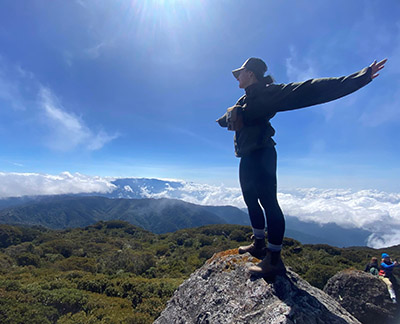
The 10-day excursion includes birding, boat trips, seining in rivers and hiking, while exposing students to sustainable management of tourism, conservation in Costa Rica, and hands-on experiences in wildlife and aquatic sciences.
“I had the opportunity to learn about and explore the variety of ecosystems and organisms within tropical regions,” May 2024 graduate Amanda King said. “One of my favorite parts of the trip was snorkeling! I had not done it before, and I really enjoyed seeing all the bright fish and swimming with sea turtles. My favorite encounters were with all the bats! There were so many that would fly around at night and we spotted a few that would perch under the large leaves during the day!”

Components of the Spring Break trip included:
- Hikes at La Suerte Rainforest Field Station , El Copal, Cerro Las Vueltas, Rio Claro and Poor Man’s Paradise
- Stops at Angostura Reservoir, the Paramo at Los Quetzales National Park , Prumnopitis forest, La Turbera (Paramo wetland)
- A boat trip to San Josecito, Poor Man’s Paradise
- A boat trip to Sirena Station at Corcovado National Park
- A boat trip on the Tarcoles River

The 2024 trip reacquainted master’s degree student Kaitlyn Young with sites and people she encountered as a student in Costa Rica in 2022 , but also offered new experiences.
“My favorite experience from this year's Costa Rica trip was reconnecting with friends that I had made when I first went on the trip as a student two years ago,” said Young, a 2022 wildlife alumna who acted as a teaching assistant this year. “Also, when you are in Costa Rica, the biodiversity can be overwhelming, so I appreciated the opportunity to visit the same places again and really soak in both familiar and new species. We had a great group on this year's trip and I'm so grateful that I got to share that experience with them. A couple highlights for me included being able to see a male Resplendent Quetzal with the group near Las Vueltas EcoLodge and seeing several species of sea turtles while snorkeling. All in all, I clocked in about 65 new birds on my Costa Rica list on this trip, which I wasn't expecting.”
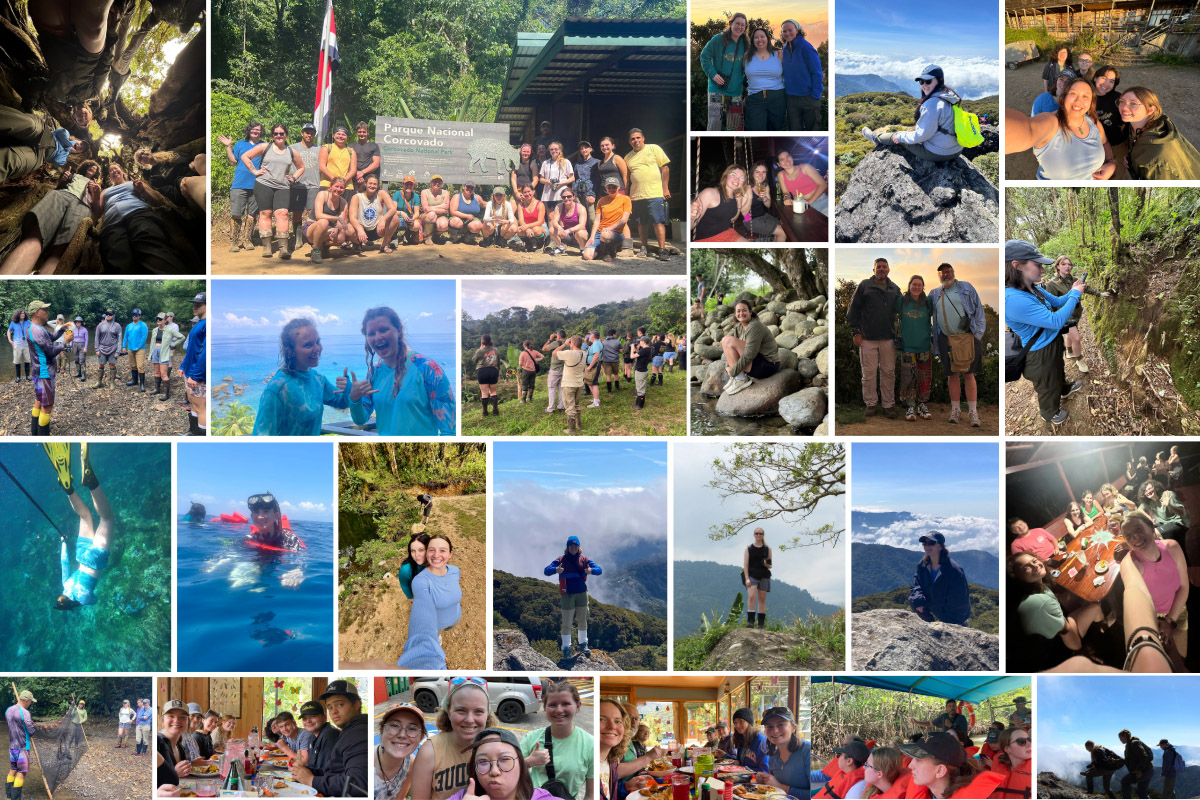
This year’s participants saw 294 species of birds, 17 species of mammals, 12 species of reptiles, nine species of amphibians and 39 species of fish. Highlights of the 2024 trip included watching Pantropical Spotter Dolphins escort the group’s boat out to the snorkeling reefs at Cano Island. Students also encountered 21 species of hummingbirds, three species of toucans and multiple individual Baird’s Tapirs at Corcovado National Park. They also went swimming with white-tipped reef sharks as well as hawksbill and Pacific green sea turtles at Cano Island.
A full photo gallery from the trip can be found on Facebook.
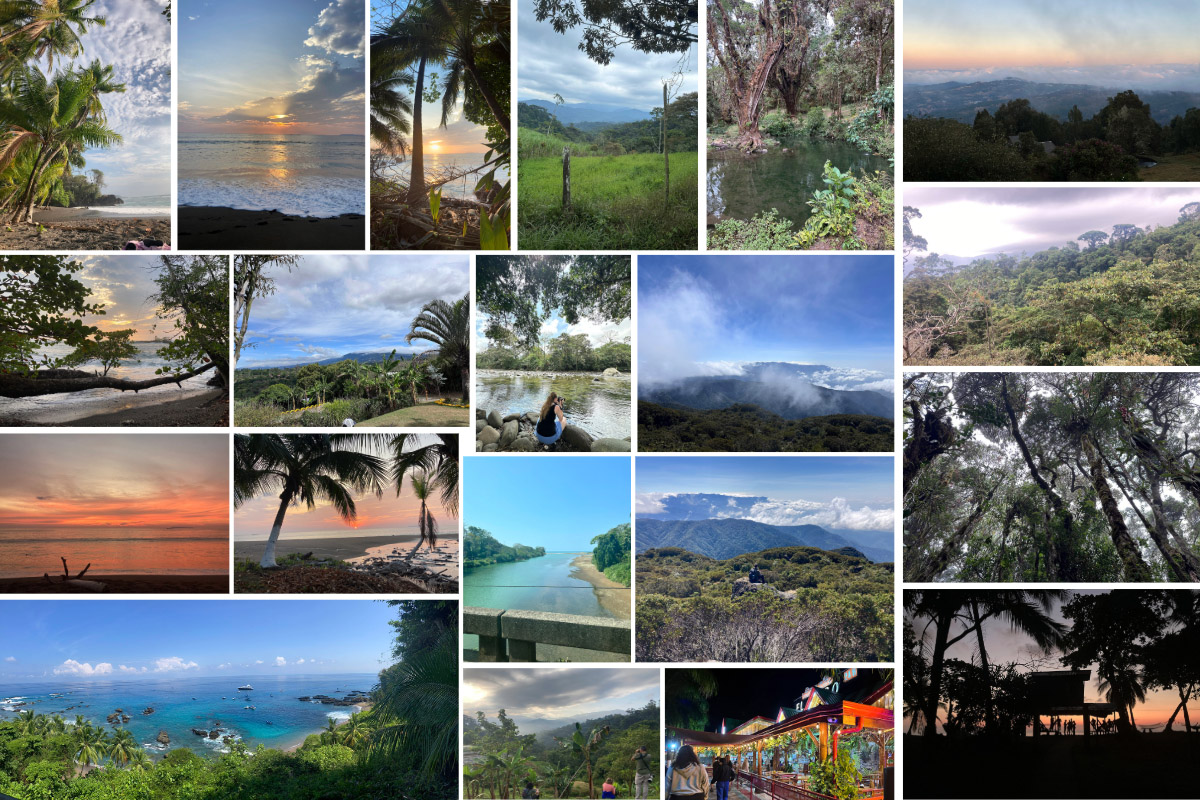
Featured Stories
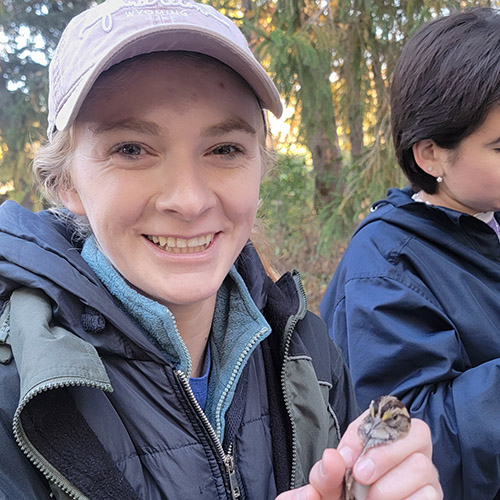
Wildlife major Rebeca Appelmann has been selected as FNR’s Outstanding Sophomore for...
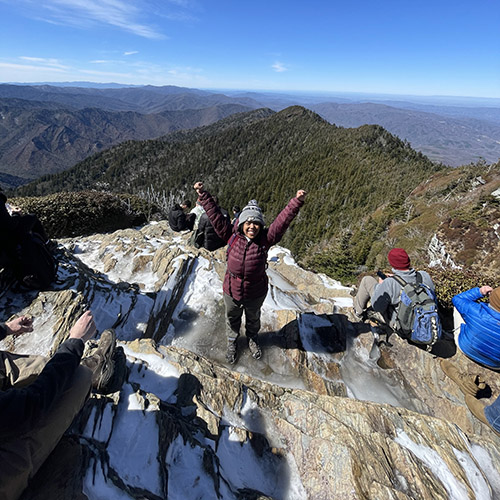
While some students headed to tropical locales for Spring Break excursions, those in the FNR...

Wildlife major Alyssa Johnson has excelled in the Purdue Department of Forestry and Natural...
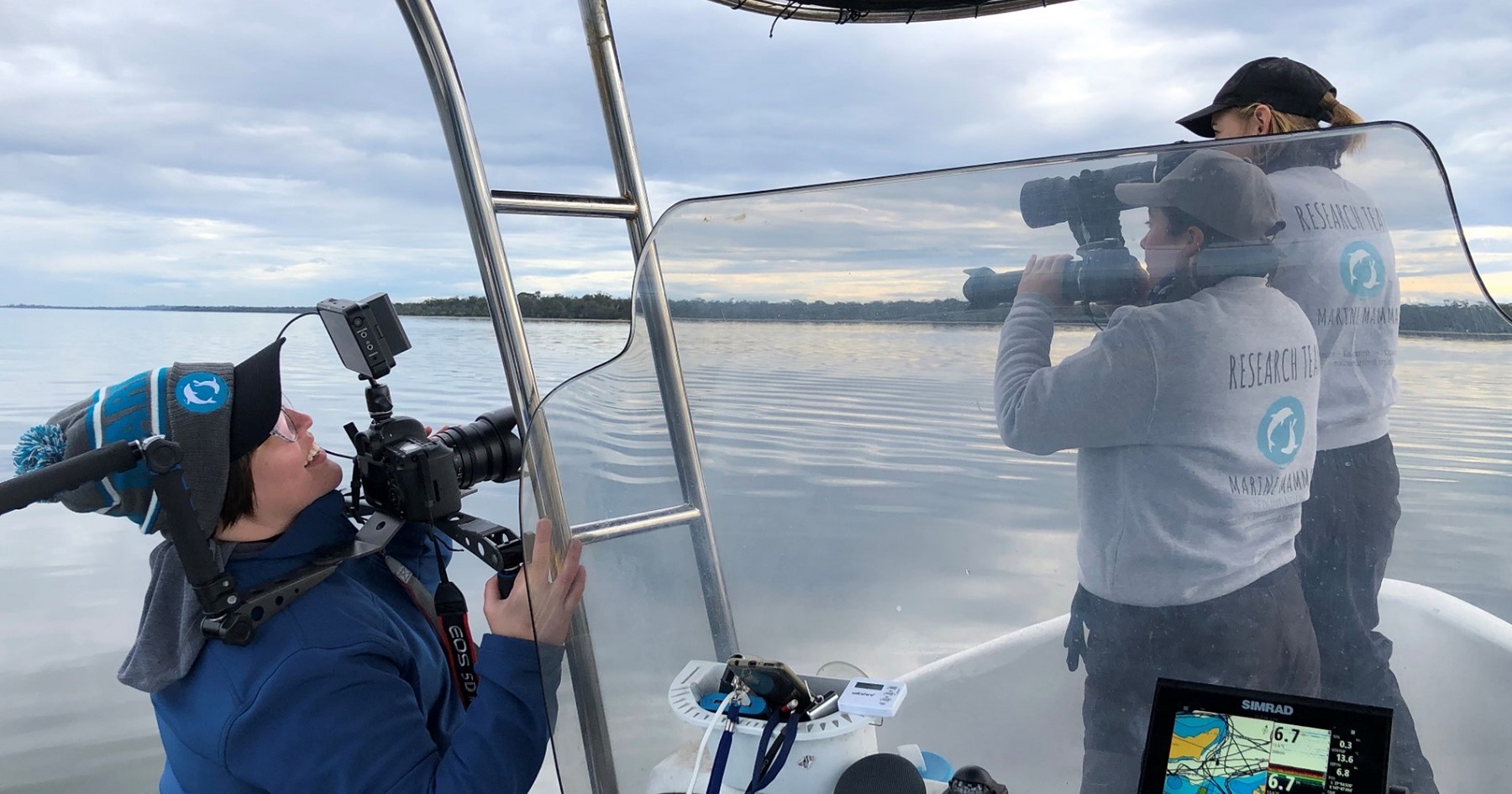
Forestry and Natural Resources (FNR) alumna Olivia Andrus-Drennan never expected that an unpaid...

A multi-university study will focus on sustainable, scalable practices such as energy-efficient...

Inaugurating a new College of Agriculture tradition, faculty and staff recently gathered to...
We use cookies
Caf strengthens alliances to finance sustainable projects in the dominican republic and costa rica.
June 04, 2024
CAF carried out a mission to the Dominican Republic and Costa Rica to promote strategic alliances to support SMEs and promote a green and sustainable agenda.

Between May 21 and 24, the Vice Presidency of the Private Sector of CAF carried out a mission to the Dominican Republic and Costa Rica, led by Alejandro Soriano , Director (e) of the Directorate of Financing and Investment in the Financial Sector and accompanied by the Representatives and Advisors of the respective Country Offices, where they visited various institutions and authorities of the Financial Sector, seeking to promote strategic alliances to support SMEs and promote a green and sustainable agenda.
Together with the CAF Representative in Dominican Republic , Daniel Cabrales, met with various entities in that country such as the National Export Bank (BANDEX), Banreservas, BHD Bank and the Association of Banks of the Dominican Republic, in order to learn about the initiatives they carry out regarding the financing of SMEs, financial inclusion, green businesses, digital transformation, gender strategy and support for the tourism sector, among others.
CAF granted a financing line for 40 MM USD to BANDEX, to promote companies led by women, the development and improvement of industrial parks in free zones, and greater access to financing in strategic sectors.
Likewise, together with advisor Florentino Fernández, strategic meetings were held in Costa Rica with the Development Banking System (SBD), al popular Bank , Fodemipyme, National Bank , Banco Promérica and BAC Bank to explore future support opportunities.
With these interventions, CAF becomes an ally for the productive development of Central America and the Caribbean, joining efforts to support initiatives that contribute to the financing of green projects, the development of SMEs and financial and social inclusion, through the financial sector. .
Latest news:
Caf and mcdf support jamaica’s vision for a global logistics hub.
June 24, 2024
What's next for the Regional Brand? 5 Lessons from Chile
June 17, 2024
CAF promotes sustainable mobility the International Transport Forum

Brasil se atraganta con Costa Rica con un 0-0…
Share this:.
- Click to share on Twitter (Opens in new window)
- Click to share on Facebook (Opens in new window)
- Click to print (Opens in new window)
- Click to email a link to a friend (Opens in new window)
- Click to share on Reddit (Opens in new window)
- Things to do
- Real Estate
- Newsletters
Breaking News
South i-5 near camp pendleton closed after chain-reaction crash leaves 3 dead, 5 injured, brasil se atraganta con costa rica con un 0-0 en su presentación en la copa américa.

Los brasileños dominaron de punta a punta su encuentro ante Costa Rica el lunes por la noche, pero no lo pudieron patentar en el marcador y firmaron un deslucido empate 0-0 en su presentación en el torneo continental.
Rodrygo, Lucas Paquetá y Vinicius Júnior tuvieron claras ocasiones de gol, pero no estuvieron finos en la definición.
“Fue un partido bien jugado, tuvimos el balón la mayor parte del tiempo, con intercambios de pases, perspectivas por ambos lados, pero faltaron movimientos de profundidad y trabajo en la última línea”, reconoció el entrenador brasileño Dorival Junior. “Ese fue nuestro principal problema esta noche, no terminamos bien las jugadas, pero presentamos cosas muy positivas”.
Cumplida la primera fecha, Colombia — que más temprano derrotó 2-1 a Paraguay en Houston — se apoderó del primer lugar del Grupo D por encima de los brasileños y costarricenses.
“Sabemos que los puntos que dejamos al principio pueden complicar las cosas al final”, dijo el central y capitán Marquinhos. “Ahora toca calmarnos. Analizar lo que hicimos bien o mal”.
Brasil marcha sexto en las eliminatorias de la CONMEBOL donde por primera vez en su historia perdieron tres partidos consecutivos.
“Cambiamos a Vini durante el partido, lo metimos adentro, luego salió afuera, estaba muy bien marcado. Buscamos soluciones. Estábamos ganando la mayoría de los balones y necesitábamos alternativas, pero no tuvimos éxito al final”, añadió Dorival.
Ante 67.158 aficionados reunidos en el Sofi Stadium, la mayoría vistiendo los colores amarillo y azul de Brasil, parecía que el equipo de Dorival Júnior podrían llevarse un triunfo sin problemas ante una Costa Rica cuyo plantel tiene el menor promedio de edad en el torneo.
Bajo el proyecto del argentino Gustavo Alfaro, quien asumió en noviembre del año pasado, el objetivo declarado en su sexta Copa América es adquirir experiencia para poder conseguir una cuarta participación consecutiva en una Copa del Mundo, la cita de 2026 que se escenificará en Norteamérica.
“Salvo el caso de (Francisco) Calvo y Joel (Campbell), para el resto estas son sus primeras batallas. Sabíamos que la diferencia en la cancha era muy grande, pero hicimos lo humanamente posible para igualarlos”, dijo Alfaro, quien dirigió a Ecuador en el pasado Mundial.
“Todo esto es un lindo premio para ellos. Cuando Vini los saludó significó mucho para ellos. Es alguien que viene de lo máximo y para nosotros que estamos empezando fue algo muy grande”, agregó Alfaro.
En los primeros compases, Rodrygo y Paquetá dispusieron buenas oportunidades que no supieron resolver.
Brasil gritó gol a los 29 con un tanto de Marquinhos, pero fue anulado por fuera de lugar luego de una revisión con el VAR.
Sobre el final de la primera parte, los brasileños volvieron a tocar a puerta con un intento de Rodrygo que se fue por encima del arco.
SEQUEIRA, LA FIGURA TICA
En el complemento, el encuentro mantuvo la misma narrativa con un Brasil dominando, pero sin generar peligro real hasta los 62 con otro disparo de Vinicius que fue rechazada por Patrick Sequeira, el nuevo titular del arco tico tras la decisión del emblemático Keylor Navas de renunciar a la selección.
Esa fue la última ocasión para Vinicius, quien poco después fue relevado por el adolescente Endrick, de 17 años.
Sequeira protagonizó una atajada monumental a los 72 para evitar un autogol. Emergió providencial para rechazar un cabezazo que su compañero Haxzel Quirós remató en dirección de su propio arco.
Brasil mantuvo su asedio y a los 79 volvió a amenazar con disparo desde fuera del área de Guilherme Arana, y otra vez Sequeira repelió.
El enfrentamiento fue el primero entre los dos países desde que Brasil se impuso 2-0 sobre los ticos en la primera ronda del Mundial de Rusia 2018.
LO QUE SIGUE
En la segunda jornada, la Canarinha se enfrentará a los paraguayos el próximo viernes en Las Vegas, mientras que Costa Rica chocará ante los colombianos en Glendale, Arizona.
Para bajar el telón de la fase de grupos, el 2 de julio, Brasil enfrentará a Colombia en Santa Clara, California y Costa Rica lo hará con Paraguay en Austin, Texas.
More in Espanol

SAN DIEGO: Condado retrocede plan de viviendas pequeñas para personas sin hogar en Spring Valley

Un juez desestima la demanda de un pastor por libertad de expresión contra el alcalde Todd Gloria

La policía de San Diego investiga después del hallazgo de un cuerpo en una casa de Clairemont
Peatón atropellado y muerto en la ruta estatal 78 en Oceanside

IMAGES
VIDEO
COMMENTS
The Costa Rica National Tourism Plan 2022-2027 defined as its first objective, to promote a resilient tourism activity that makes sustainable use of tourism and cultural heritage. The aim is to have, by 2027, tourism destination management plans that integrate local tourism development, sustainable production and measures to combat climate ...
The developed policies closely relate to the achievement of the UN Sustainable Development Goals, specifically goals to reduce poverty, promote economic growth and sustainability, all of which have a direct relationship to tourism in Costa Rica. By 2021, the vision for tourism in Costa Rica is to be a leading creator of foreign exchange, and ...
Today, tourism generates 8.1 percent of the Central American country's GDP, and the minister recognizes that it brings benefits and social and economic progress in areas where traditional industry has yet to reach. Rodríguez affirmed that the sustainability aspect in Costa Rica is focused on environmental, social, and economic factors.
Sustainable Destinations in Costa Rica: Arenal and Monteverde. Hanging bridges in La Fortuna, near Arenal. Established in 1991, Arenal Volcano National Park protects 29,850 acres and at least 131 ...
Costa Rica Tourism Board. INSTITUTIONAL SITE. The Costa Rican Tourism Board (ICT) invites you to explore this dynamic platform, in which you can learn in detail about the area of activity of Costa Rica's leading tourism institution, with up-to-date information for all of your inquiries. While you browse the sections of this site, which has been ...
Tourism is also included in the sectoral strategic proposal of the National Development Plan 2018-21. In 2021, Costa Rica launched the Tourism Local Development Engine (Tu-MoDeLo) initiative aimed at improving the livelihoods of agricultural communities through the identification of market opportunities in the tourism sector for sustainable ...
The Costa Rica National Tourism Plan 2022-2027 defined as its first objective, to promote a resilient tourism activity that makes sustainable use of tourism and cultural heritage.
Costa Rica's tourism offerings, they need to be demarked with careful planning and clear limitations, just as does any other kind of development. We believe that Costa Rica is best served by redoubling its efforts to support and promote high-value, nature-based tourism grounded in sound environmental and social principles and practices. Signed:
23 October 2021 Climate and Environment. Costa Rica is one of the winners of the inaugural UN-backed Earthshot Prize, in recognition of the Central American country's efforts to reverse damage to its environment and develop in a sustainable manner. Red-eye tree frogs are native to the rain forests of Central America., by UNDP/Adriana Dinu.
The activities outlined above are expected to help Costa Rica transition to more sustainable agriculture production systems that allow the country to meet its' conservation and development goals in an integrated manner. It will also open the door a little wider for the country's eco-tourism livelihood opportunities to move beyond forests ...
Sustainability. it is a way of life. With a goal to be the first carbon neutral country in the world by 2021, sustainable practices are observed in every region of the country, across all industries, adopted by all citizens and embraced by visitors. From local Costa Rican cuisine to artisan crafts to traditional customs and celebrations ...
The Costa Rica National Tourism Plan 2022-2027 defined as its first objective, to promote a resilient tourism activity that makes sustainable use of tourism and cultural heritage. The aim is to have, by 2027, tourism destination management plans that integrate local tourism development, sustainable production and measures to combat climate ...
The 2020 edition analyses tourism performance and policy trends across 51 OECD countries and partner economies. It highlights the need for coherent and comprehensive approaches to tourism policy making, and the significance of the tourism economy, with data covering domestic, inbound and outbound tourism, enterprises and employment, and internal tourism consumption.
A: Emerging trends include wellness tourism, adventure tourism, and cultural tourism. In conclusion, tourism plays a crucial role in Costa Rica's economy, driving growth, creating jobs, and fostering sustainable development. Despite the challenges, the sector's future looks promising, with opportunities for diversification and innovation.
Poás Volcano Crater is one of Costa Rica's main tourist attractions. Cocos Island is a prime ecotourism destination. A World Heritage Site, ranked among the top 77 nominees for the world's New 7 Wonders of Nature.. Tourism in Costa Rica has been one of the fastest growing economic sectors of the country and by 1995 became the largest foreign exchange earner.
The Costa Rican Tourism Institute (ICT) recently announced the the National Tourism Plan for 2022-2027. Presented by William Rodríguez López, Minister of Tourism, in an event at the convention center, the plan features three main objectives for the growth and improvement of the Costa Rican tourism industry: Sustainability. Innovation.
Ecotourism has brought significant economic benefits to Costa Rica, contributing to the country's overall growth and development. The sustainable tourism practices and emphasis on conservation have created a strong and thriving ecotourism industry, which has become a major source of revenue for the country. One of the key economic benefits of ...
Tourism in Costa Rica ... Development of the tourism sector in Costa Rica from 1995 to 2021 The following chart shows the number of tourist arrivals registered in Costa Rica each year. Anyone who spends at least one night in the country but does not live there for more than 12 months is considered a tourist. Insofar as the survey included the ...
Some of the top attractions include Arenal Volcano, Manuel Antonio National Park, La Paz Waterfalls, Papagayo Peninsula, Tamarindo beach, Rio Celeste, Monteverde Cloud Forest and Corcovado National Park. You can enjoy activities such as surfing, snorkeling, fishing, ziplining and hiking. Costa Rica is also home to many unique and diverse animal ...
tourism development in Costa Rica since the 1980s. The first stage, the pioneering period. (1980-1988), consisted mainly of academic and scientist tourists (a trend that ini tiated back in. the ...
Jun 30, 2023. The readiness of information and communication technology was the best condition for tourism development in Costa Rica in 2021, according to the Travel and Tourism Development Index ...
T1 - Community agency and sustainable tourism development. T2 - The case of La Fortuna, Costa Rica. AU - Matarrita-Cascante, David. AU - Brennan, Mark Anthony. ... Costa Rica, engaged in sustainable tourism practices. The study was based on the theoretical notion of the community field. It used key informant interviews and participant observation.
Costa Rica's tourism development 2021, by subindex Published by Ana M. López, May 14, 2024 In 2021, the infrastructure of Costa Rica received a Travel & Tourism Development Index score of 4.8 out ...
· Impact: Recognizing the significant social impact of responsible travel and tourism, Big Five's programs in Costa Rica focus on fostering meaningful connections with indigenous communities such ...
Providing the necessary support. Patricia Rojas, General Manager of the Promotora de Innovación added: "The Promotora is proud to be part of this initiative that will boost innovation and entrepreneurship in rural areas of Costa Rica. We are committed to providing the necessary support for the LINCs and CECIs to become engines of development for their communities."
The Costa Rica Natural History study abroad course offers students the opportunity to explore biodiversity and Costa Rican societal values in tropical rainforest, Pacific dry forest, Pacific rock reef and Pacific mangrove ecosystems. The 10-day excursion includes birding, boat trips, seining in ...
Suape, a new terminal in development, initiated the planting of 1,000 native tree seedlings - the equivalent of which can capture more than 142 tons of CO2 over the course of 20 years. ... Costa Rica where, coinciding with World Environment Day, APM Terminals Moín colleagues joined Tourism students and staff from the National Learning ...
Between May 21 and 24, the Vice Presidency of the Private Sector of CAF carried out a mission to the Dominican Republic and Costa Rica, led by Alejandro Soriano, Director (e) of the Directorate of Financing and Investment in the Financial Sector and accompanied by the Representatives and Advisors of the respective Country Offices, where they visited various institutions and authorities of the ...
Warren Madrigal of Costa Rica battles for possession with Eder Militao of Brazil during the CONMEBOL Copa America 2024 Group D match between Brazil and Costa Rica at SoFi Stadium on June 24, 2024 ...